PinotFile: 7.6 November 17, 2008
|
¡Salud! Oregon Toasts the 2007 VintageEach November for 17 years, Oregon’s finest producers of Pinot Noir have held a celebratory auction to herald the previous year’s vintage and raise funds to provide access to healthcare for Oregon’s seasonal vineyard workers and their families. The event is appropriately called ¡Salud!, which is the traditional Spanish toast, “To Your Health.”
 ¡Salud! is a cooperative effort between Oregon winery owners and Tuality Healthcare physicians and is unique to Oregon. No other state in the country has such a far reaching program to provide healthcare for the seasonal worker population. Dedicated bilingual/bicultural nurses and medical professionals staff community-based clinics providing guidance in navigating the services offered by the Oregon Health Plan or offering financial assistance when necessary. Dental care, wellness clinics, mobile clinics, occupational health programs and community outreach with other healthcare agencies all combine to provide quality and compassionate care for field workers and their families. The event consists of two tastings and auctions. On Friday, November 7, Domaine Drouhin Oregon hosted a tasting of special 2007 ¡Salud! Pinot Noir cuvees from 42 of Oregon’s most celebrated wineries. A Big Board Auction offered the 500 attendees a chance to bid on single-case lots of the special wines. The Pinot Noirs, which are not sold on the retail market, represent the finest expressions of the vintage. This tasting provided a unique opportunity to preview the 2007 Oregon Pinot Noir vintage (more about that later). On the following day. Saturday, November 8, winery principals and consumers donned their formal attire to attend the dinner and auction at the historic Governor Hotel in Portland. The silent and live auction featured rare packages and wines from Oregon and beyond. Popular lots included several packages that offered a combination of one case each of three ¡Salud! cuvees coupled with dinner for six with the winemakers of the cuvees on the Thursday preceding next year’s ¡Salud!. The Saturday dinner was prepared by guest chef Bill King, McCormick & Schmick’s Seafood Restaurants’ Vice President of Training & Culinary Development.
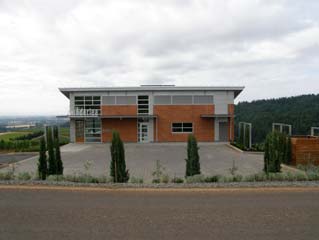 A preliminary tally indicated this year’s ¡Salud! raised $733.812. The Los Heroes de ¡Salud! award, given in recognition of an outstanding business or individual who offers innovative contributions to the ¡Salud! program, went to Bill Sweat and Donna Morris of Winderlea Vineyard & Winery in the Dundee Hills. Bill Sweat and Donna Morris are relative newcomers to the Oregon wine scene, having purchased the Goldschmidt Vineyard, renaming it Winderlea Vineyard, and founding their winery in 2005. In 2008, the Winderlea tasting room was opened on Worden Hill Road and the new owners made the generous decision to donate all tasting room fees to ¡Salud! as a way to demonstrate their commitment to the mission.
This year’s ¡Salud! chairs were Vincent Reyes, M.D., and Amy Wesselman (Westrey Wine Company). Besides
chairing ¡Salud!, Amy is the mother of twins, a winemaker, and a past director of the International Pinot Noir
Celebration. I interviewed Amy as well as Nancy Ponzi (Ponzi Vineyards) about the ¡Salud! Event. Nancy
Ponzi was one of the original organizers and founders of ¡Salud!, and, in addition, played a major role in
establishing Oregon’s Pinot Camp and International Pinot Noir Celebration. Listen at : “Salud 2008”
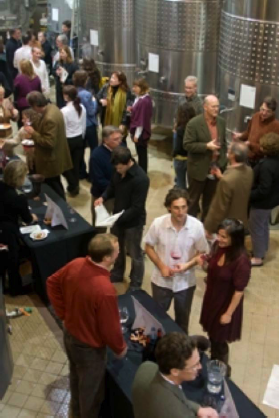 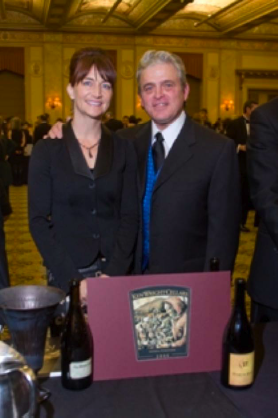
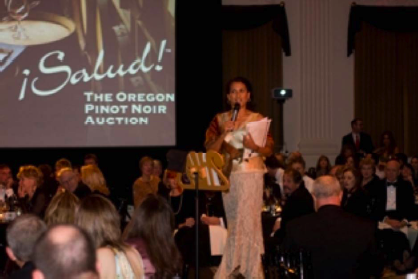 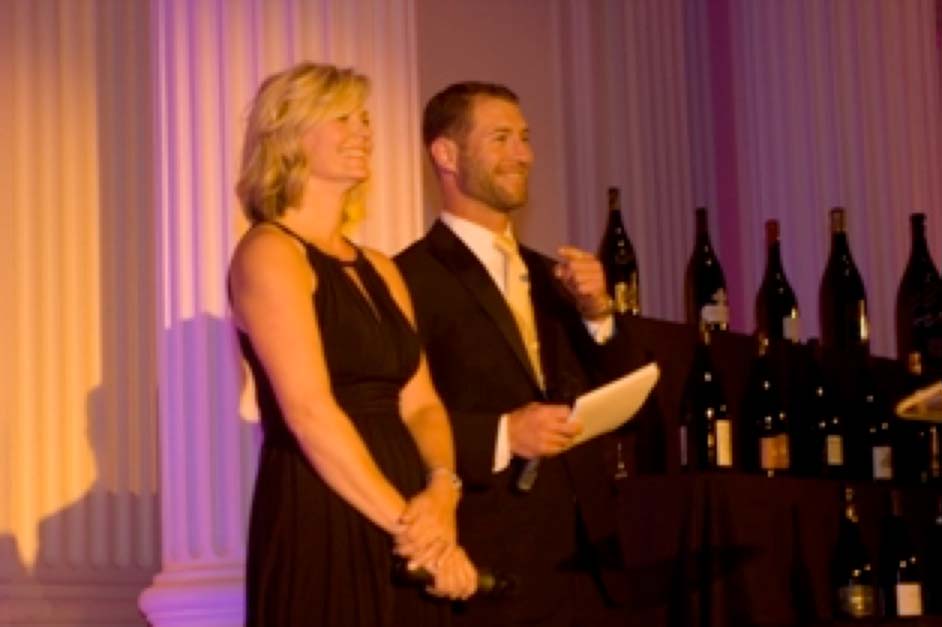
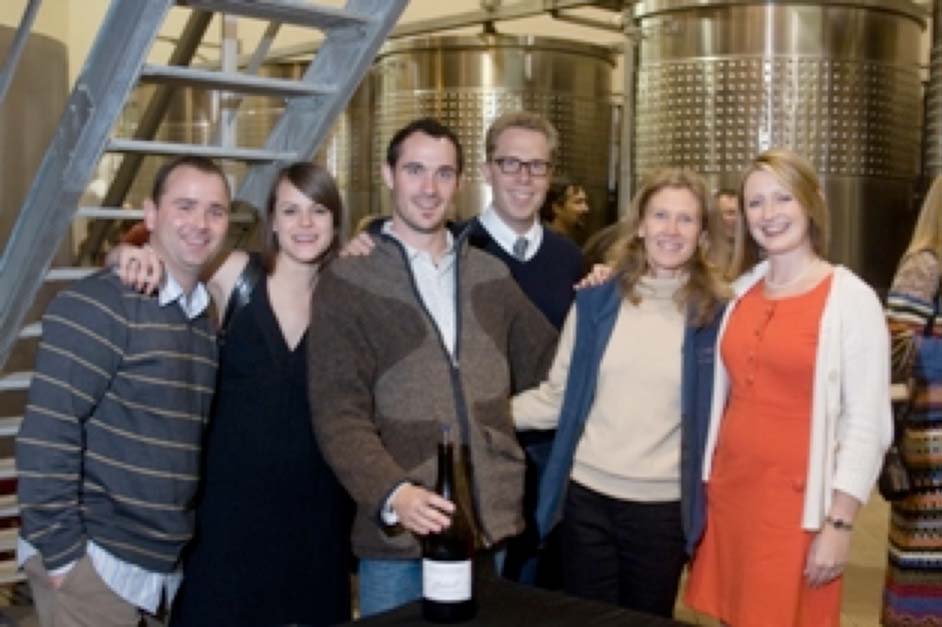 Key: L to R clockwise: Big Board Auction and Tasting at Domaine Drouhin; Domaine Drouhin team; Leda Garside, RN: Co- Auctioneers Maria Ponzi and Jesse Lange; Ken and Karen Wright
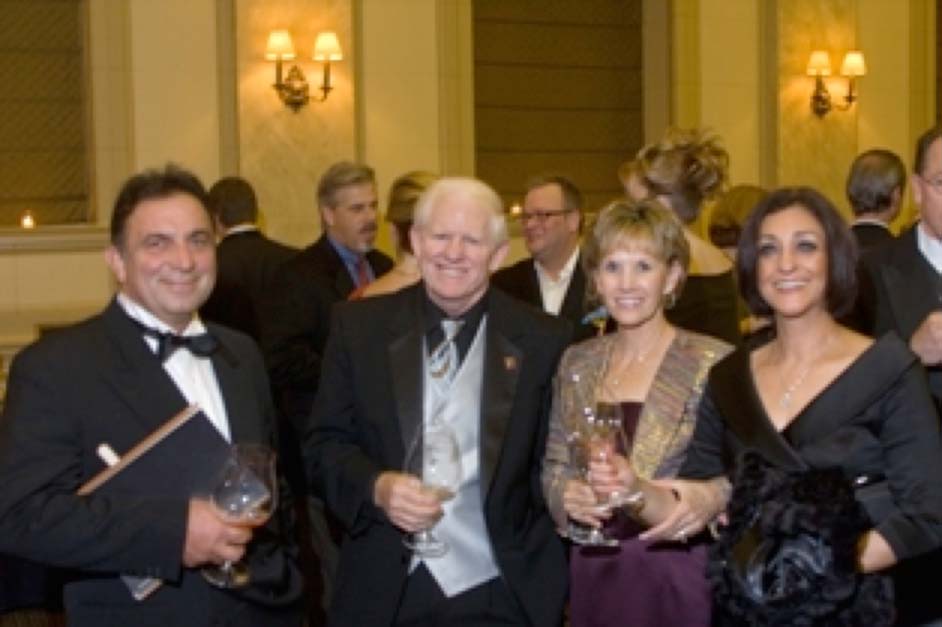
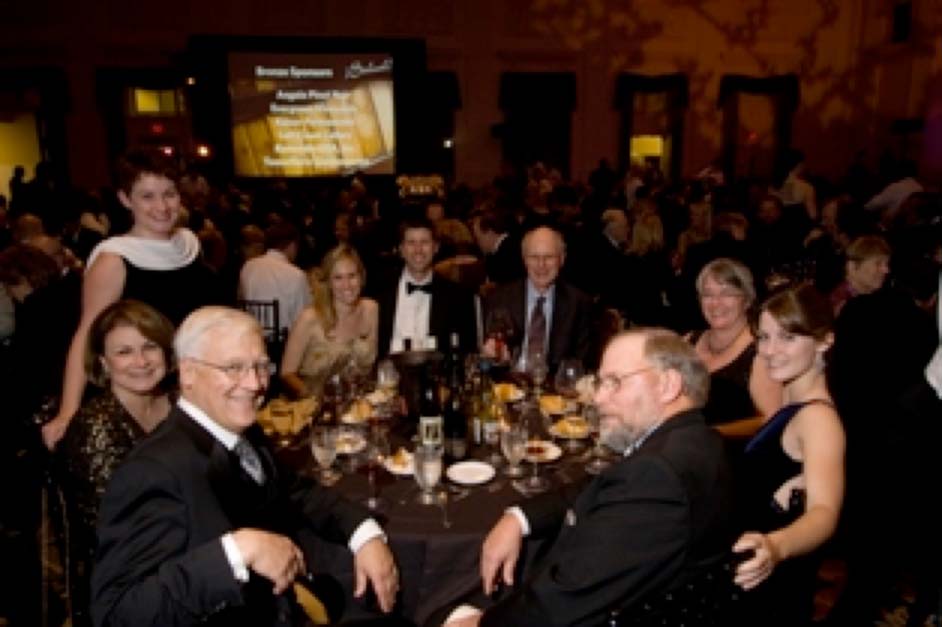
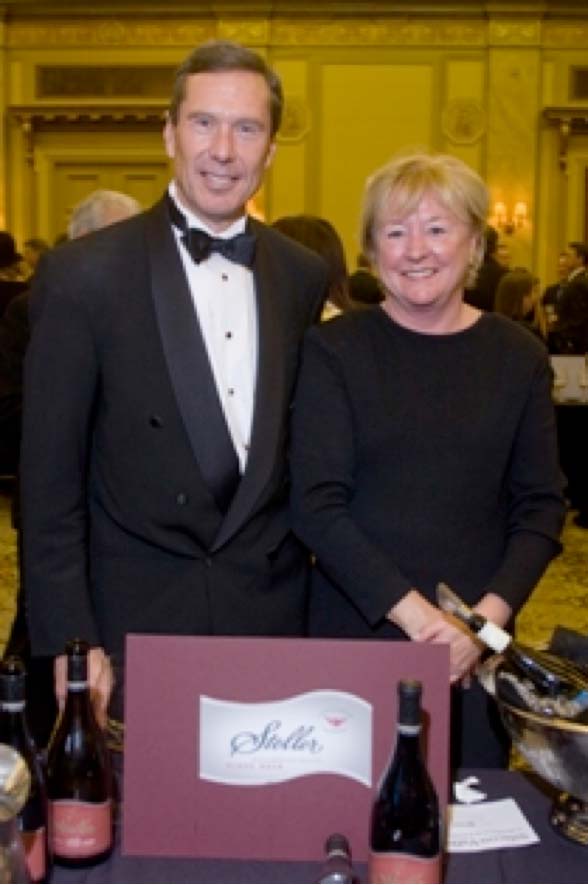 Key: Top to bottom: Moe and Flora Momtazi, Rusty and Patti Gaffney; Four Graces Table; Bill and Cathy Stoller
The participating wineries at ¡Salud! (Vintner’s Circle) represent the core of Oregon’s Pinot Noir industry.

Adelsheim Vineyard A pioneering Oregon winery that first planted 15 acres of vines in the
Chehalem Mountains in 1972. Founders David and Ginny Adelsheim produced their first wine in
1978 and their initial Pinot Noir from their own grapes in the 1979 vintage. Today they farm 200
acres primarily on the south side of the Chehalem Mountains and produce several blended and
vineyard-designated Pinot Noirs.
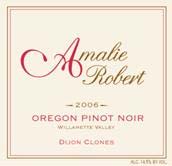
Amelie Robert Estate Amalie Robert is a combination of founders ’Dena Drews’ middle
name, Amelie’ (pronounced AIM-a-lee) and Ernie Pink’s middle name, ‘Robert.’ The owners
acquired a 60-acre property planted to cherries in Dallas, Oregon in 1999 and planted a 30-
acre vineyard. The inaugural Estate crush was in 2006. Ernie was formerly employed at
Microsoft, and uses his computer knowhow to smoothly direct the logistics of the Big Board
Auction for ¡Salud!.
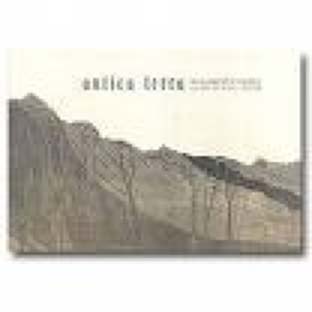
Antica Terra The Antica Terra Vineyard is a 28-acre parcel in the Amity-Eola Hills, first
established in 1989. Today there are 6 acres of densely planted Pinot Noir vines. New
owners acquired the property in 2005. Maggie Harrison, formerly assistant winemaker at
Sine Qua Non is the a partner and the new winemaker. This is an exceptional vineyard.
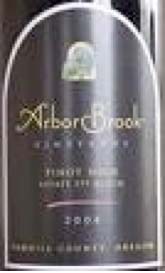
ArborBrook Vineyards A family owned winery established in 2001 producing estate grown Pinot
Noir from vineyards located on the southern flank of the Chehalem Mountain range near Newberg.
The vineyard is dry-farmed and planted to Dijon clones 115, 667 and 777 and Pommard clone.
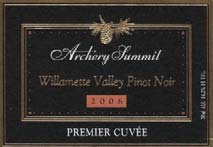
Archery Summit A well-established and much-respected winery in Dayton, Oregon.
Founded in1993, the winery is housed in a modern gravity-flow facility and aging is carried
out in the estate’s caves. The winery farms 115 acres of vineyards in the Dundee Hills
that are densely planted and sustainably farmed. Vineyards include Archery Summit
Estate, Arcus Estate, Red Hills Estate, Renegade Ridge Estate and Looney.
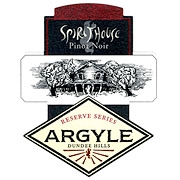
Argyle Argyle farms 500 acres of Willamette Valley vineyards. Winemaker Rollin Soles has
been at the helm for 22 vintages. Argyle was at the forefront in the late 1980s in introducing
high-density vineyard planting and Dijon clones to Oregon. The sparkling wine program is
among the best in Oregon. Argyle’s Victorian farmhouse tasting room is a landmark in the
heart of Dundee. The winery is housed in a former hazelnut processing plant located just
behind the tasting room.
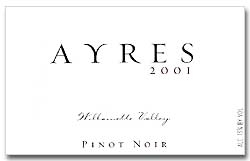
Ayres Vineyard Located in the Ribbon Ridge AVA. Ayres Vineyard is home to 18 acres
of Pinot Noir. Three generations live among the vines. The winery is located 12 feet
underground enabling the earth’s natural insulation to produce stable and predictable
cellar temperatures.

Beaux Frères Established in 1988, this winery is a partnership between Robert Parker,
winemaker Michael Etzel and Robert Roy. The focus is on estate-grown Pinot Noirs from
vineyards that are planted to tightly spaced vines where crop yields are kept to about two tons
per acre.
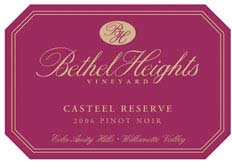
Bergström Wines A family owned and operated winery which began in 1999 with three
tons of purchased fruit from the Dundee Hills. Currently there are 35 acres of
biodynamically certified Pinot Noir estate acres in the Dundee Hills and Chehalem
Mountains with 8,000 cases of wine, primarily Pinot Noir, produced annually.
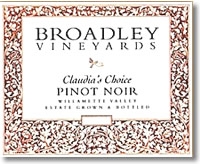
Bethel Heights Vineyard Twin brothers Ted and Terry Casteel left other careers to enter
the wine business.The two Casteel families bought 75 acres in the Eola Hills west of
Salem in 1978 and for the first few years grew grapes to sell to others. Ted has been
responsible for the vineyards and Terry has made the wines. Their spouses, Pat and
Marilyn, have shared the responsibility for marketing and business. The next generation
is now gradually taking over the vineyard management and winemaking duties.
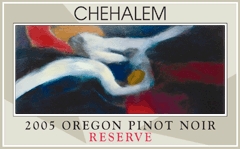
Broadley Vineyards This winery was established in 1982 in the hills west of the town of
Monroe in Oregon. The family owned estate vineyard of 33 acres contains some of the
original plantings of Pommard and Wädenswil established in 1982. Broadley’s signature
winemaking style is its use of a high percentage of whole cluster fermentation. Both
estate and sourced fruit are used in the wines.
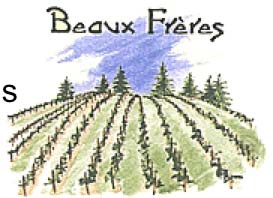
Chehalem Harry Peterson-Nedry and Bill and Cathy Stoller established this much-loved
Oregon winery in 1990. The Pinot Noirs are stellar, but the whites including Chardonnay,
Pinot Gris, Pinot Blanc, and Riesling are equally adored. All the 22,000 case production is
made in small lots. Almost all the grape sources are directly farmed by the winery owners.
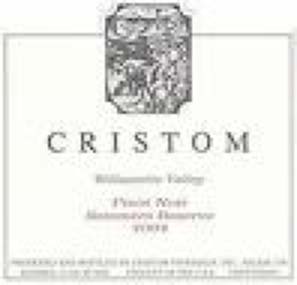 Cristom Vineyards Eileen and Paul Gerrie joined winemaker Steve Doerner in founding this winery which released its first wine in 1992. Over 60 acres are now planted in grapes. The principal wine produced is Pinot Noir, but several other varieties are in the lineup. The name Cristom honors the Gerrie’s children, Christine and Tom. This is one of my favorite Oregon wineries. In a weak moment, I bid on and won two cases of Cristom’s special 2007 ¡Salud! cuvee at the Big Board Auction. This wine was sourced from Michael Etzel at Beaux Frères. The fruit was from ‘Jackie’s Block’ at Beaux Frères Vineyard which is all Wädenswil clone that is own rooted. The vineyard was planted from cuttings from the original Jim Maresh Vineyard in the Dundee Hills. It is a 1.4-acre site planted in 1991. Steve vinified the wine in a separate wooden barrel and then aged it in a Francois Frères half-barrel. He used a large percentage of whole clusters and all native yeast in the style of all Cristom Pinot Noirs. I thought this was the most outstanding wine I tasted at the ¡Salud! Big Board Auction at Domaine Drouhin on Friday.
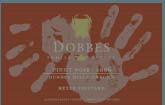
Dobbes Family Estate Joe Dobbes has been making wine for 23 years and his Dobbes
Family Estate is the result of a long-standing dream of creating a family wine business.
He trained both in Germany and Alsace as well as Domaine G. Roumier and Domine des
Comtes Lafon in Burgundy. In 2001, he created Wine By Joe, LLC, a custom
winemaking company where he crafts wine for over 22 clients within his two facilities in
Dundee. He also owns and produces three of his own labels: Wine By Joe, Jovino Pinot
Noir (a restaurant brand), and Dobbes Family Estate.
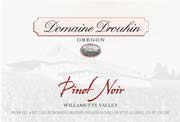
Domaine Drouhin Oregon Established in 1987 by the Drouhin winemaking family of
France, DDO represents the first serious Burgundian investment in Oregon. The eight
story gravity flow winery built into the slopes high in the Red Hills of Dundee serves as
the host site for the ¡Salud! Big Board Auction. DDO’s estate is composed of 225
acres, of which 90 acres are currently under vine. The vineyards are planted on a highdensity
Burgundian template, which encourages greater plant competition resulting in
less fruit per vine. Production is about 12,000 cases per year of Pinot Noir and 2,000
cases of Chardonnay.

Elk Cove Vineyards Founded in 1974 by Pat and Joe Campbell, Elk Cove
Vineyards is one of Oregon’soldest and most respected wine producers.
Estate vineyards now total over 180 acres on four separate sites in the
northern Willamette Valley. In 1995, Adam Godlee Campbell joined his
parents to become winemaker and general manager and the wines have
continued on a path of excellence.

Erath Vineyards Dick Erath grew up in the East Bay area of Northern California. While living in Walnut Creek,
and working as an electrical engineer, he grew some Zinfandel and bought grapes from
other vineyards to make wine. His enrollment in classes at University of California Davis
in 1967 changed his life and Oregon’s wine future forever. Erath met Andre Tchelistcheff
and Louis Martini, but it was the people heading north to Oregon that caught most of his
attention. In one of his classes was Richard Sommer, who became Oregon’s modern
pioneering winemaker. He established Hillcrest Vineyard in the Umpqua Valley, but
many of his colleagues, including Dick Erath, headed more north to the Willamette
Valley. Within a year of finishing classes at University of California Davis, Erath moved to
Oregon, and planted 4 acres of Pinot Noir (the first Pommard clone planted in Oregon), Riesling and
Gewürztraminer in the Chehalm Mountains. He had his first crush and wine with the Erath name on it in 1972,
all 216 cases of it. He would form a partnership with Cal Knudsen to establish Knudsen-Erath Winery in 1975.
Knudsen eventually left to partner with Australian Brian Croser to found Argyle Winery and Erath trooped on
alone. In 1994, Erath hired winemaker Rob Stuart and the winery continued to prosper. In 2006, Erath was
sold to St. Michelle Wine Estates.
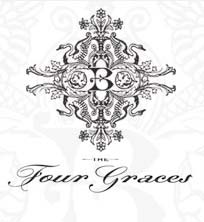
The Four Graces This is a family owned business started by Steve and Paula Black who
named their winery in honor of their four daughters. The vineyards are sustainably farmed with
a dedication to both organic and biodynamic practices. The winery and Black Family Estate
vineyard are located on Hwy 99 in Dundee and offer a welcome respite for visitors to the
Willamette Valley. Established in 2003, the wines have been stellar under the graceful hand of
winemaker Laurent Montalieu.
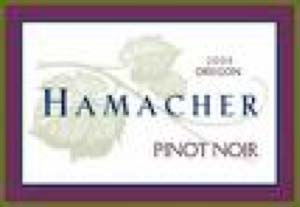
Hamacher Wines Hamacher leases several vineyard parcels throughout the Willamette
Valley. Vines range in age from 5 to 32 years. Each block of grapes from each vineyard
is vinified separately. Aging is carried out for 18 months before blending. Owner and
winemaker Eric Hamacher is one of a small group of independent producers who call The
Carlton Winemakers Studio home. This sustainably constructed winemaking facility was
the first of its kind and offers modern winemaking equipment scaled down for boutique
sized productions.

Ken Wright Cellars Ken Wright is an iconic force in the Oregon Pinot Noir industry. He
established Panther Creek Cellars, Domaine Serene and his own Ken Wright Cellars in addition
to Tyrus Edna (a producer of non-Pinot Noir varieties). Wright originally developed his
winemaking acumen in California’s Central Coast before moving to Oregon and starting Panther
Creek Cellars in 1986. He was one of the early champions of single-vineyard Pinot Noirs in
Oregon. Wright works closely with growers and all of his leased vineyards are organically
farmed. His wines are respected for their interpretation of Oregon’s diverse terroirs.
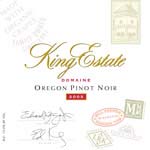
King Estate Winery The 1,000 acre Estate, located southeast of Eugene, is Oregon’s largest,
encompassing 470 acres of certified organic vineyards, a grapevine grafting facility, nursery,
vegetable and flower gardens and orchards with a state-of-the-art winery. Winemaking has been
certified organic by Oregon Tilth since 2002. King Estate is perhaps best known for its Pinot Gris,
ranking as Oregon’s finest.
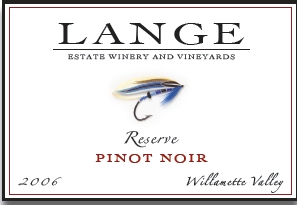
Lange Estate Winery & Vineyards Established in 1987, this winery has grown to an
annual production of 18,000 cases. The Estate has expanded from the original 29-acre
property to a total of 55 acres, all within the Dundee Hills AVA. The wines are known for
their impressive age-worthiness. Second generation winemaker Jesse Lange is in charge.
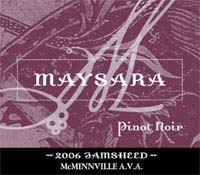
Maysara Winery The Momtazi Vineyard, established in 2001 by Moe and Flora Momtazi,
consists of over 225 acres and is Oregon’s largest Demeter Certified Biodynamic vineyard.
Demeter Certified Biodynamic winemaking practices are carried out in the winery as well
under the direction of Tahmiene Momtazi. This is an impressive family owned and operated
estate that is producing unique wines as well as supplying grapes to over 30 producers in
Oregon.
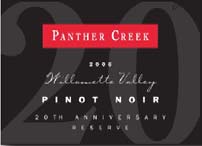
Panther Creek Cellars This venerable producer is located in historic downtown
McMinnville and has been producing hand-crafted Pinot Noirs since 1986. The winery,
founded by Ken Wright, was subsequently owned by the Kaplan family for many years.
Their story is detailed in the book written by Linda Kaplan, My First Crush. Mark Vlossak
of St. Innocent Winery was the consulting winemaker for the Kaplans for many years. The
current owner is Chambers McMinnville LLC (also owner of Silvan Ridge Winery near
Eugene) and the winemaker since 1999 is Michael Stevenson who replaced Vlossak. The
Kaplans remain actively involved in the winery operations. The winery recently released its
20th Anniversary Pinot Noir.
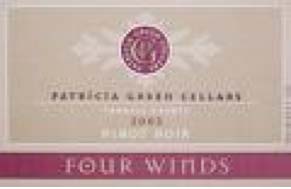
Patricia Green Cellars Patty Green and Jim Anderson own and operate this 52-acre
estate which is located on North Valley Road in northwestern Newberg in the Ribbon
Ridge AVA of Yamhill County. The Pinot Noirs are sourced from both an Estate Vineyard
and several premium vineyards in the Dundee Hills and Eola-Amity Hills appellations.
The emphasis is on single-vineyard bottlings and up to 20 different Pinot Noir wines have
been produced. Total production exceeds 10,000 cases including the largest production
of Sauvignon Blanc in Oregon as well as some Chardonnay (but as Patty says, they are
not sure how that happens).
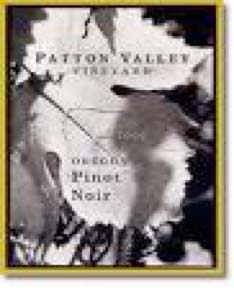
Patton Valley Vineyard This winery was founded in 1995 by two former business school
classmates, Monte Pitt and Dave Chen. Located on a 72-acre parcel in the northern reaches
of the Willamette Valley, the vineyard consists of 24 acres planted to a diverse selection of
Pinot Noir clones. The vineyard is LIVE certified (2006). Production is currently about 3,000
cases of estate grown Pinot Noir.
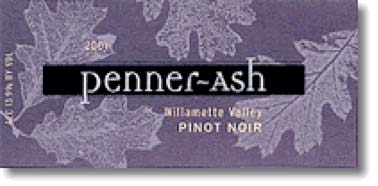
Penner-Ash Wine Cellars Lynn and Ron Penner-Ash started their own label in
1998, sourcing fruit from established vineyards in Oregon and crafting their wines
at Carlton Winemakers Studio. Today, the wines are produced on the estate
property in the Yamhill-Carlton appellation in a new sustainable, gravity-flow
winery situated within Dussin Vineyard. The emphasis is on Pinot Noir and both a
reserve quality Willamette Valley Pinot Noir and vineyard-designated Pinot Noirs
are produced.

Ponzi Vineyards Ponzi has been one of the most visible faces of Oregon Pinot
Noir for nearly four decades. Second generation winemaker Luisa Ponzi, together
with her brother and sister management team, maintain an unwavering
commitment to winemaking excellence. Dick and Nancy Ponzi came to Oregon
from Los Gatos, California, and founded their family owned and operated winery in
1970. Dick Ponzi was not educated at the University of California Davis like many
of his pioneering compatriots in Oregon, but he was heavily influenced by his
father who made wine at home. He was initially driven to return to the earth for sustenance, much like many of
the hippie-influenced farmers of his generation. The family now owns and farms more than 120 acres of LIVE
Certified Sustainable vineyards in the Chehalem Mountains AVA. A new, expansive and modern winery was
finished in time for the 2008 vintage.
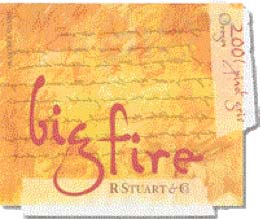
R. Stuart & Co. The winery is housed in a converted granary in the McMinnville
neighborhood affectionately known as the “Pinot Quarter.” Grapes are sourced from notable
vineyards including Temperance Hill, Melrose, Ana, Winderlea and Weber. The entry level
wines intended for everyday drinking are bottled under the Big Fire label. The premium Pinot
Noirs and sparkling Rosè d’Or bear the more traditional R. Stuart & Co. label. In 2007, six
vineyard-designated and one blended Pinot Noir were produced.
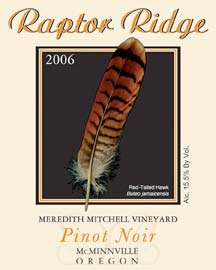
Raptor Ridge Winery Located in the Chehalem Mountains, the name comes from the owls
and hawks that fly over Raptor Ridge where Scott Schull hand crafts small quantities of Pinot
Gris and Pinot Noir. The winery was founded in 1995 and now produces over 4,500 cases of
wine annually. Scott has planted an 18-acre vineyard in the Chahalem Mountains which will
eventually supply about one-third of his fruit. Scott works with several area vineyards to craft
both blended and single-vineyard Pinot Noirs. Both Scott and his wife Annie are active in the
Oregon wine industry and this year contributed a significant amount of their profits to the
¡Salud! Auction.
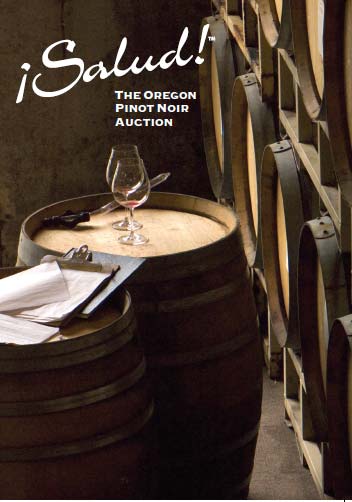
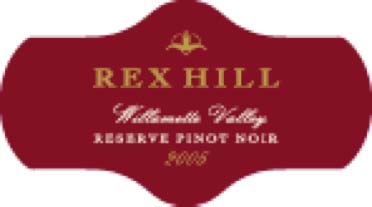
Rex Hill Vineyards Rex Hill has been one of Oregon’s premier wineries for 25
years. In 2006, the winery was acquired by A to Z Wineworks which is owned by Bill
and Deb Hatcher, Sam Tannahill and Cheryl Frances and winemaker Michael Davies.
Rex Hill partners with Salmon Safe and LIVE and farms biodynamically large portions
of the Estate and Jacob Hart Vineyards with a goal toward biodynamic certification.
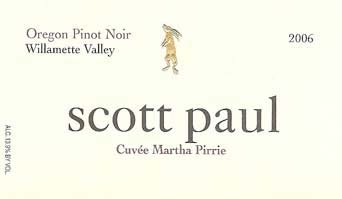
Scott Paul Wines The mantra here is low yields (less than 1.7 tons per acre over
the last nine years) and sustainable viticulture. All wild yeast fermentations, no
inoculations, no enzymes, and no additives. New oak is limited to no more than
20%. The wines are not manipulated in any way, fined, or filtered. Scott Paul
sources grapes from many of Oregon’s finest vineyards including Maresh, Ribbon
Ridge, and Momtazi. Two circa-1915 granary buildings in the village of Carlton were
recently renovated and converted into a tasting room, winery and business offices.
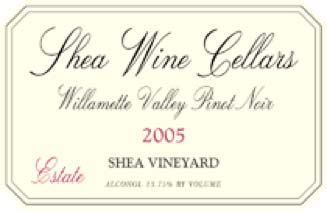
Shea Wine Cellars Dick Shea originally planted his namesake vineyard in 1989, one
of the first plantings in Yamhill-Carlton District. Over time the vineyard has been
expanded and partially replanted, and now consists of 180 acres of vines. Grapes from
this vineyard have been highly sought-after by Oregon winemakers (and a few
California winemakers as well). In 1996, Dick Shea started his own label, Shea Wine
Cellars, beginning with a very modest 25 cases of Pinot Noir. By 2006, production
reached 3,700 cases of Pinot Noir and 425 cases of Chardonnay all from estate grown
fruit. A new winery was built on the property in 2007.

Soléna Cellars In 2000, Laurent Montalieu and Danielle Andrus Montalieu bought an 80-acre
estate as their wedding gift to each other. The property is aptly named Domaine Danielle Laurent.
Planting started with six different clonal selections of Pinot Noir. Winery production now is over
5,000 cases of Pinot Noir, Pinot Gris, Cabernet Sauvignon, Merlot, Zinfandel and Syrah (grapes
for warm varietals are sourced from eastern Washington). Soléna wines have been produced at
NW Wine Company in McMinnville, a custom winemaking facility conceived by the Montalieus in
partnership with John Niemeyer of Oregon Wine Services. NW Wine Company is home to over
30 different labels. The Montalieus are building a winery on their estate property which will also be
home to Grand Cru Estates, a ‘members only’ winery that allows members to produce their very
own barrel of wine tailored to their palate. Laurent Montalieu and Tony Rynders will guide the members in their
winemaking process.

Soter Vineyards World-renowned winemaker Tony Soter has left California behind
permanently to settle in his home state of Oregon. His base is a 245-acre ranch called
Mineral Springs outside of Carlton where he farms 32 acres of Pinot Noir. The first
harvest from Mineral Springs Vineyard, which is certified sustainable, was in 2005.
Soter’s sparkling wines are a superb compliment to his Pinot Noir lineup.
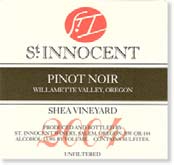
St. Innocent Winery Established in 1988, winemaker Mark Vlossak produces vineyarddesignated
Pinot from vineyards in the northern Willamette Valley. Vlossak’s emphasis is
on crafting wines that are enjoyable with a meal and age worthy. Many of the vineyarddesignated
Pinot Noirs reach their peak after 10 to 15 years of bottle age. St. Innocent
also produces Chardonnay, Pinot Gris and Pinot Blanc with small lots of sparkling wine. In
2006, St. Innocent entered into a partnership with Zenith Vineyard (formerly O’Connor
Vineyard) and is now producing its first estate wines. Zenith is located in the Eola-Amity
Hills northwest of Salem. A new winery at Zenith was finished in time for the 2007 harvest.
The winery features a multi level gravity-flow design with two large underground barrel
rooms. St. Innocent wines have received considerable critical praise from wine critics and the wine press.
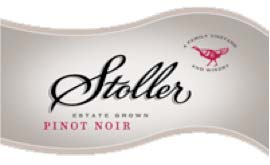
Stoller Bill and Kathy Stoller have built a magnificent wine estate on a 373-acre parcel on
the southern slopes of the Dundee Hills. The property was originally owned by Bill’s
father and uncle and operated as a turkey and grain farm since the 1940s. Bill and Cathy
Stoller acquired the property in 1993 and began planting the vineyard in 1995. Today
there are 170 acres of vines, primarily Pinot Noir and Chardonnay. Stoller winery is
Oregon’s first gold level LEED-certified winery, integrating gravity flow winemaking
techniques, energy efficient heating and cooling, and waste water reclamation to reduce
negative environmental impact.
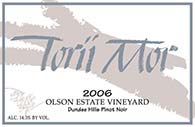
Torii Mor Winery Torii Mor was founded in 1993 by Donald Olson, M.D., who remains
the owner today with his wife Margie. The name Torii Mor was chosen by Dr. Olson as
he felt it conjured a feeling of unique elegance. Borrowing from the Japanese, the
word “Torii” refers to the ornate gates most often seen at the entrances to Japanese
gardens. “Mor” is an ancient Scandinavian word that means “earth.” By integrating
these two distinct languages, the romantic image of a gate to the earth space or
passageway to beautiful things is formed. The Olson Estate Vineyard (formerly
McDaniel Vineyard) is located in the Dundee Hills and is one of the oldest vineyards in
Yamhill County with initial plantings dating to 1972. Current production is about 14,000 cases of primarily Pinot Noir along with Pinot Gris, Pinot Blanc and Port. Winemaker Jacques Tardy crafts vineyard-designated and
blended Pinot Noirs in the classic “Burgundian” manner. A new solar array, gravity-flow winery is seeking
LEED certification.

Westrey Wine Company Founded in 1993, Westrey is a collaborative winemaking
effort of spouses Amy Wesselman and David Autrey. The inaugural vintage in 1993
produced just 400 cases. Westrey has grown but is committed to limiting production to
4,000 to 6,000 cases annually to allow each lot to receive the attention it deserves.
Both reserve and single vineyard bottlings of Pinot Noir emphasize balanced texture,
acidity and alcohol, with new oak playing a minor role (usually 20%). Equal care is
given to Pinot Gris and Chardonnay which possess the structure and balance to age
well. I successfully bid on a case of 2007 Westrey ¡Salud! Pinot Noir cuvee made from
Oracle Vineyard fruit, the site Amy and David own and farm in the Dundee Hills. The
vineyard combines vines planted in 1977 as well as 2001.
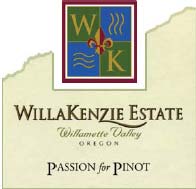
WillaKenzie Estate This estate is a producer of small lots of premium Pinot Noir, Gamay
Noir, Pinot Meunier Pinot Gris and Pinot Blanc. It is named after the soil on which the
vineyards are planted. The winery’s motto is “Passion for Pinot.” At least 13 different Pinot
Noirs are produced including single clone Pinot Noirs offered only to Cellar Club members.
Sustainable farming is emphasized. The modern gravity-flow winery was completed in 1995
and is tucked into the hillside of the property providing natural cooling on the fermentation
and barrel cellar levels. The winemaking team is French combining age-old Burgundian
methods with the latest advanced techniques. The tasting room was one of the first in the
Willamette Valley.
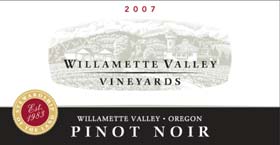
Willamette Valley Vineyards Oregon native Jim Bernau founded Willamette
Valley Vineyards in 1983 in Turner, Oregon. Pinot Noir, Pinot Gris and
Chardonnay are produced. The winery’s three main fruit sources are the Estate
Vineyard, Tualatin Vineyard and Elton Vineyard, all of which are certified
sustainable (LIVE and Salmon Safe). The Estate Vineyard Pinot Noir block is
certified organic. The sites have diverse clonal plantings, varied trellising systems,
and microclimates allowing winemakers Forrest Klaffke and Don Crank to create
complex wines.
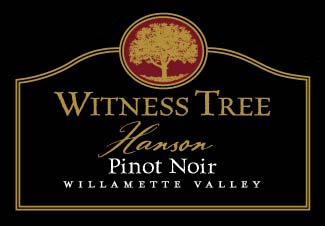
Witness Tree Vineyard Named for an ancient oak tree that towers over this 100-acre
estate, Witness Tree only produces wines from grapes grown on the 52-acre estate
vineyard. The vineyard is farmed sustainably and is certified LIVE. Yields are kept low.
Pinot Noir is the focus, but small quantities of Chardonnay, Pinot Blanc, Viognier and
Dolcetto are also grown.
Some comments on recent Oregon vintages, particularly the 2007 vintage, are in order. Rain is synonymous with Oregon, but unfairly so, for in the Willamette Valley, there is no more rain than other cool climate growing regions of the world. From April to September, the Willamette Valley is often dry, although rain in the spring can wreak havoc on bloom and rain in late summer can complicate harvest. From 1998 to 2003, Oregon enjoyed a string of hot, dry vintages without significant rain pressure. However, from 2004 to 2007, rain was a significant influence on each vintage. In 2004, rains in September receded before final ripening and the vintage turned out to have low yields with superbly balanced flavors, acidity and tannins. 2005 was shouldered with rain and cool weather in the spring and at harvest. It was a challenging vintage with irregular flowering. Harvest was extended, lasting into November for several vineyards. Despite the weather challenges, the wines of 2005 are of high quality, nicely balanced and possess excellent acidity for aging. In 2006, there was higher than normal rainfall in the winter and a dry, warm summer leading to record high yields (an increase of 38% over the previous year.) Considered a ripe, California-type vintage with higher alcohols, the wines are quite fruit-forward, showy and hedonistic and many should be consumed within five years. In 2007, winemakers had “roller coaster” weather in the spring and had to dodge rain at harvest. Early reports from the wine press were gloomy. The truth is, advances in viticulture in Oregon have enabled the winegrowers to craft quality Pinot Noir despite challenging weather during the growing season. The 2007 vintage has turned out fine. I tasted more than half of the 2007 ¡Salud! Cuvee Pinot Noirs at the Big Board Auction and the wines were marvelous, with moderate alcohols, lively acidity, charming aromatics, soft tannins and memorable layers of flavor. The 2008 growing year was a classic in Oregon. A long dry and moderate summer was followed by cold weather allowing slow ripening and a late harvest. Light rain in October created no significant problems and the cold deterred rot. Everywhere I went after harvest in the Willamette Valley, winemakers were smiling, touting the quality of grapes as superb with bright acidities and low alcohols. Early barrel samples I tasted confirmed the winemaker’s enthusiasm. In speaking with winemakers about the current vintages in the marketplace (2005, 2006 and 2007), they recommended drinking the 2006 wines now, dipping into some of the 2007 wines (no hurry though as they will age well), and holding back the 2005 wines for a few years. If you prefer fruit-driven wines with plenty of ripeness, go for the 2006 vintage. If you delight in more classic, restrained Pinot Noir. look to the 2007 vintage wines. This was never more clear to me than when I spent a few hours with Mimi Casteel at Bethel Heights and tasted through the winery’s lineup of 2006 and 2007 Pinot Noirs (look for a full report in an upcoming issue). The 2006 wines were darkly colored, generous in alcohol, stacked and packed with fruit and very sexy. Think actress Julianne Moore in leopard print flaunting her hair and cheek bones. The 2007 wines (several of which were just bottled) were more restrained and nuanced, and showed more pinotosity. More jene sais quoi of French style like Juliette Binoche.
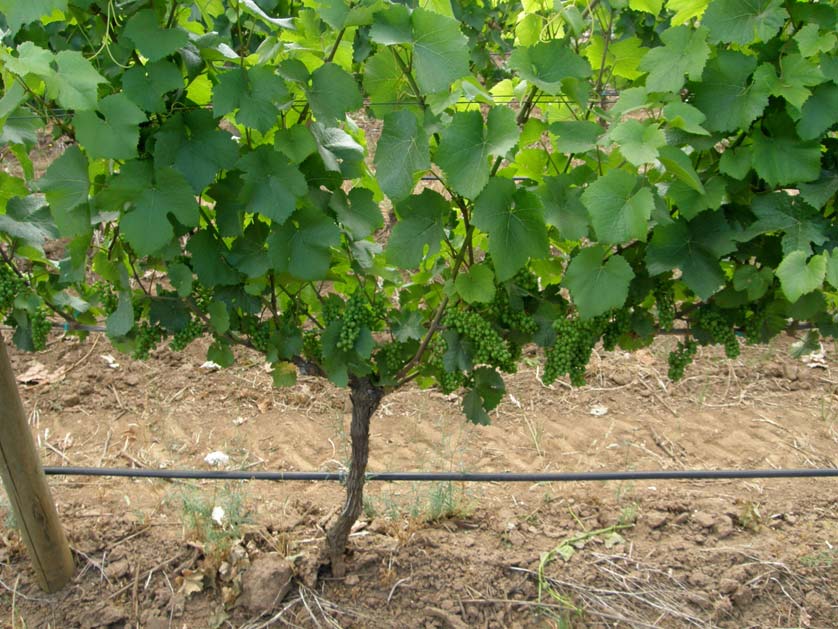
California Recession-Busting PinotsWhat California needs now is a good Pinot Noir priced under $20. I recently visited a number of high volume wine retailers like Total Wine & More and BevMo and obtained Pinot Noirs from primarily recognized producers throughout California, all but two priced under $20. Many of these wines carry a suggested retail price above $20, but are usually available for less at high volume retail stores which often operate on margins of 15% markup or less. Once you have fawned over premium California Pinot Noirs, it is hard to go back to valuepriced wines. The current economic downtown, however, will force many to seek out recession-busting Pinot Noirs for daily drinking. Finding good Pinot Noirs for under $20 is challenging. Winemakers I asked told me there are a number of practical reasons why it is difficult to produce good inexpensive Pinot Noir. Pinot Noir grapes are expensive (often $3,000 to $6,000 per ton depending on the region and vineyard - 1 ton equals +/- 60 cases), forcing value producers to seek out Pinot Noir that is grown in less than ideal areas (including foreign sources such as Corsica) or sourcing vineyards that are somewhat neglected and pay less than the Grape Crush Report weighted average pricing. There is an enormous cost of farming quality Pinot Noir grapes including the necessity of vineyard consultants and this cost must be passed on to the winery. The winery has costs and profit margins to meet and they usually account for 50% of the FOB (freight on board or price of the wine delivered to a wholesaler at a specific location) or 25% of retail cost. Packaging alone adds $20-$25 to the cost of every case. The wine is sold to the distributor at the FOB price. The distributor increases it by up to 50% of their cost, and sells it to the retailer who in turn marks the wine up by anywhere from 12%-50% of their price. By the time the bottle has arrived on the shelf in California, it is a wonder there are any Pinot Noirs priced under $20! Wineries can cut corners in many ways. It is not unusual for value producers to blend in up to 25% of some cheaper, preferably darker, wine into the finished wine (legal in California but if it is an appellation-designated Pinot Noir, the cheaper blending wine is limited to 15% instead of 25%). Wine can be bought off the bulk wine market to reduce production costs. The current bulk market price of California Pinot Noir is about $25 per gallon which translates to a cost of wine of $60 per case. If you add in bottling and packaging costs at $40 per case, it is possible to get a Pinot Noir to the selling point of $100 per case. After the distributor takes his cut, the retailer would pay $160 for this case of Pinot Noir and sell it for less than $20 a bottle. Buying Pinot Noir grapes and having them custom crushed would yield a similar cost per case ($4,000 per ton for grapes, $1,000 per ton to crush and ferment, more to age, bottle and package gets you to the same case selling point). Oak alternatives such as staves can be substituted for new oak barrels to reduce costs. At Purple Wine Co. (Mark West Pinot Noir), winemaker Alex Cose adds a small amount of amply oaked Chardonnay to his Pinot Noir to obtain more oak notes. In most cases, a large winery facility capable of producing high volumes is necessary to produce inexpensive Pinot Noir as large capitalization is involved. The more wine you make, the lower your per bottle costs for everything. Wineries that own their own vineyards have a distinct advantage. Tony Craig, owner and winemaker for Sonnet Wines, spoke about why many talented winemakers simply refuse to make inexpensive, high-volume Pinot Noir. He said, “Making wine is hard work, especially small batch single vineyard designates. There is very little room for error. With large case volume production, you can blend away mistakes (so-called “Bail-Out” wines). I did the large volume thing and it was like working in a wine factory. If I’m going to work that hard, I want something truly artistic, and worth working for in the bottle.” The buyer should be aware of several caveats when buying under $20 Pinot Noir. The wines are rarely singlevineyard designated Pinot Noirs. As noted above, other varieties, particularly Syrah and Petit Sirah, can be added to the finished wine. This may or may not be indicated on the label. “Produced and Bottled By” indicates the named winery on the label actually made and bottled the wine inside. “Cellared and Bottled By” indicates at least some or maybe all the wine came from outside sources and was aged at the winery’s facility. The wines often carry a general California appellation indicating grapes and or wine were obtained from multiple wine producing regions of California rather than a more specific appellation. The wines are often more manipulated, receive color, acid and tannin additives, and are frequently fined and filtered. Aging in barrels may be limited and the wine may be released shortly after bottling. All that said, among the 24 wines I sampled I found a few California Pinot Noirs priced under $20 to be quite appealing and several others that were very ordinary but quite drinkable. I did not find one wine that had serious defects or was unpalatable, but I only chose to sample wines from wineries I was familiar with that had a track record for respectability. Generally, the closer to $20 the wine was priced, the better the quality. The wines were all varietally correct. None of the wines was truly exciting. Oak aromas and flavors often outdueled the fruit. The mid palate was often shallow and the finish short. The wines tended to lose their allure somewhat quickly in the glass, rather than gaining in character and nuances. I found some solid daily drinkers among the lineup of wines tasted that were readily accessible and I would urge you to supplement your highend purchases with a few of these recommended Pinot Noirs. This can be particularly advantageous when your thirsty relatives show up over the Holidays and begin peering with envy at your well-stocked cellar.
THE BEST Note: two of the wines in this category are priced slightly over $20, but worth the extra two bucks.
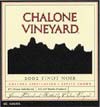 2006 Chalone Vineyard Estate Grown Monterey County Pinot Noir 14.7% alc., 1,065 cases, $21.50. From estate vineyards in the Gavilan Mountain Range in Monterey County (Chalone AVA). Well-drained soils rich in limestone, with limited rainfall and low crop levels. · Hi-toned mineral-inflected cherries on the nose. Deftly oaked redder fruits in the mouth with well-defined raspberry notes and a hint of raisin. Nice richness on the palate and quite satisfying. This wine is a steal considering the respected heritage of this winery. Chalone also has a Monterey County bottling (Chalone Monterey) priced at about $12, but it is not totally from estate fruit. I did not sample it.
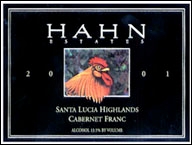 2006 Hahn Estates Monterey Pinot Noir 14.5% alc., $15 ($23 at winery). Sourced from estate vineyards MontereyCounty. The label sports a rooster (“hahn” in German). Aged 10 months in 65% new French oak. · Initially there is a lovely cherry scented nose with accents of earth, clove and smoke. With time in the glass, smoky oak dominates the fruit. Medium-weighted sweet black cherry fruit is accented with raspberry, raisin and even pear. Silky textured and nicely balanced with moderate length to the appealing finish.
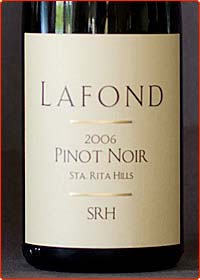 2006 Lafond Winery & Vineyards Sta. Rita Hills Pinot Noir 13.8% alc., 3,544 cases. $19 ($26 at winery). 92% Lafond Vineyard, 8% Arita Hills Vineyard. 6 different Pinot Noir clones. Aged in 25% new French oak. The winemaker is Bruce McGuire. · Really charming aromatics featuring bright cherry, Indian spices and a hint of pepper building in intensity in the glass. The attack leads with a full-on charge of tart cherry fruit that is fresh and satisfying. The tannins are fine and supple and the finish leaves a lingering berry-toned aromatic impression. Beautifully balanced and tres Pinot. The best wine among the under $20 recession-busting Pinots tasted.
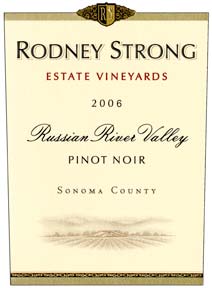 2006 Rodney Strong Estate Vineyards Russian River Valley Pinot Noir 14.3% alc., $22. Rodney Strong is a very large producer of multiple varieties of wine from Sonoma County vineyards. The Pinot Noir program has been very impressive of late. The accomplished winemaker is Rick Sayre. 3% Syrah. Aged 9 months in French oak barrels. · Moderately light reddish-purple color. Demure red cherry perfume with subtle oak aromas. Appealing bolt of red cherry fruit on entry. Refined and persistent in the mouth with fine-grain tannins and a slightly dry finish. I would be perfectly happy with this wine at dinner. A Reserve is also available at $35.
THE DECENT
2007 Bishop’s Peak Central Coast Pinot Noir 13.9% alc., $16. “Rock solid wines” from San Luis Obispo County vineyards. Produced by Talley Family Winery. · Attractive deep cherry and berry fruited nose with an echo of oak. Tasty deeply colored fruits with a touch of herbs and a hint of citrus on the finish. Very refined, smooth and well-crafted.
2007 Byron Santa Maria Valley Pinot Noir 14.4% alc., $19. Estate produced and bottled. · Well-oaked cherry fruit with herbal overtones carrying through in the flavors. Noticeably toasty. Clean and precise with soft tannins. Matches up nicely with grilled lamb.
2006 Castle Rock Reserve Russian River Valley Pinot Noir 13.8% alc., 2,800 cases, $15. · Jolly Rancher confected cherry and cherry vanilla soda aromas with subtle oak intrusion. Medium-weighted Bing cherry and vanilla cream flavors with herbs and citric peel in the background. Full-flavored and displaying some elegance. This wine will definitely find fans
2007 Girasole Vineyards Mendocino Pinot Noir 13.7% alc., $12. From 45-year-old organically farmed vines in the Redwood Valley AVA of Mendocino County. · Complex aromatic profile of candied apple, new oak, new mown grass and orange peel. The wooded red fruit is soft and light on the palate. Supple tannins make for easy drinking.
2006 Hangtime Force Canyon Vineyard Arroyo Seco Pinot Noir 13.5% alc., $15. 100% Pinot Noir. Aged 7 months in 33% new oak barrels. · Scent of rich, ripe strawberry jam with a hint of new oak. Very ripe verging on stewed fruit flavors with a touch of mocha dust. Light and restrained with admirable finesse and balance.
2006 La Crema Sonoma Coast Pinot Noir 13.9% alc., $16. · Moderately light reddish-purple color. A cherrydriven wine that is medium-weighted offering tangy fruit flavors enhanced by a touch of spice. The oak is well integrated, the texture is silky and the finish is dry and refreshing. Noticeably less tannic than typical Sonoma Coast Pinot Noirs and more akin to Russian River Valley Pinot Noir bottlings.
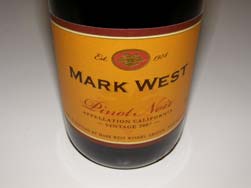 2007 Mark West California Pinot Noir 13.8% alc., $9. Fruit is sourced from coastal appellations. Produced at Purple Wine Co. in Graton (Russian River Valley). Fermented in small tanks after gentle crushing and punch downs and pressed lightly. Aged in French and Hungarian oak barrels for 8 months. The winery’s manifesto is “Get affordable Pinot into as many hands as we can.” The slogan, “Pinot for the People,” is an extension of this goal. · Pleasing fruit aromas of strawberries, cassis, and red Juju B’s, with a mild oak overlay. Aromas do not hold up well with time in the glass. Good berry and cherry fruit flavors with subtle accents of oak, char and herbs finishing dry and clean with decent length. Great value.
2006 Muirwood Arroyo Seco Pinot Noir 13.5% alc., $10. Produced by Muirwood Vineyards in San Martin, CA. Six Pinot Noir clones, aged in new and seasoned French oak. · Deep red fruits with overpowering oak char on the nose. Darker cherry and berry fruit flavors that are soft on the palate and clean on the finish. Once you get by the nose, it is a pretty good drink for the money.
2006 Paraiso Vineyards Santa Lucia Highlands Pinot Noir 14.4% alc., $19. Paraiso (pa-rye-zo) is the name given to the mountainside by early Spanish explorers where the Smith family has lived for 35 years on a sustainably farmed vineyard. · This wine shows the dark side of Pinot Noir. Deep ruby color. Restrained and brooding scents of dark Pinot fruits, black tea, and earth. Sweet plum sauce on the palate with some richness, a velvety mouth feel, and a smooth and tangy finish.
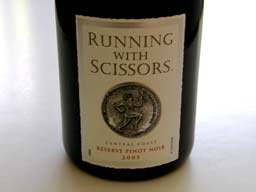 2006 Running With Scissors Reserve Central Coast Pinot Noir 13.5% alc., $10. The name and tag line onback label are worth the price: “Running With Scissors Pinot Noir...Do try this at home.” · Light crimson color. Shy aromas of cherries and cranberries and a hint of alcohol. A lighter-weighted wine with pleasant cherry and strawberry flavors accented with oak and savory herbs. Decent acidity and a clean finish. Tastes a lot better than it smells.
THE PASSABLE
2007 Angeline Russian River Valley Pinot Noir 13.9% alc., $12.50. · Funky nose of fresh-sawn oak, redwood, herbs and pineapple (due to some VA). Moderate amount of black cherry fruit smoothly presented with a sidecar of oak toast and herbs.
2007 Au Bon Climat Santa Barbara County Pinot Noir 13.5% alc., $20. 76% Pinot Noir, 24% Mondeuse. · Darkly fruited nose with a touch of chocolate fudge, barnyard and hay. Juicy nondescript dark fruit with a hint of pepper, char and tea flavors. Nicely crafted with decent acidity for the table, but veers away from the typical Pinot Noir flavor profile.
2007 Blackstone California Pinot Noir 13.5% alc., $9. · Well-oaked, earth-dusted black cherry fruit with some herbs and stem evident and a definite citrus strike to the finish. Pleasant and drinkable. A Reserve bottling is also available ($19).
2006 Bogle Vineyards Russian River Valley Pinot Noir 14.2% alc., $12. · Smoky cherry-berry fruits with a little good Pinot funk and whiff of oak char on the nose leading to simple and shallow fruit in the mouth that is sensibly balanced with soft tannins and reasonable acidity.
2006 Carmel Road Monterey Pinot Noir 14.0% alc., $15. Produced by Carmel Road Winery in Soledad and bottled at Carmel Road Winery in Santa Rosa. · Darkly colored. The nose is not appealing with oak, tobacco and herbs dominating the dark fruit in the background. Earthy blackberry and plum fruit with a coat of mocha dust. The finish is dry, tart and short.
2007 Castle Rock Mendocino County Pinot Noir 13.8% alc., $10. · Lightly colored and weighted with very shy smoky cherry aromas and soft simple red fruits on the palate. Respectable for its elegance and softness and its loyalty to the charm of the varietal, but lacks interest and flavor punch.
2006 Mac Murray Ranch Sonoma Coast Pinot Noir 13.5% alc., $18. · The appealing aromas trump the flavors in this wine. Nice black cherry, earth and cola scents. The dark cherry fruit is nicely presented on a silky platform with a clean and dry finish, but a dirty oak and stemmy taste spoils the ending.
2007 Parker Station California Pinot Noir 13.5% alc., $15, screw cap. Advertised on the label as “The best Pinot Noir you can afford to drink daily.” · Very ripe, jammy dark fruit is featured with a noticeable amount of oak running through from start to finish. Some interesting green tea and tangerine peel flavors. Very smooth on the palate with admirable acidity.
14.1% alc., $16. · Medium reddish-purple robe. Restrained nose that never really delivers much more than demure raspberry cream aromas. Light and soft raspberry and cherry fruits with a hint of citrus presented in an elegant fashion. Very demure in nature, almost too shy in flavor impact.
2006 Steele Carneros Pinot Noir 13.5% alc., $17.50. · Plenty of oak char and smoke create a stinky nose. Smoked and roasted black cherry and raspberry fruit with a slightly hot finish. Only for those with a fire and smoke fetish. Barely passable.
In the midst of a recession, the cost of making wine continues to go up. Price increases from growers, escalating barrel and packaging material costs and rising transportation costs continue to pressure producers to raise their prices. Some wineries may have to lower prices and take less profit, something I have rarely observed in the domestic fine wine retail market. Some retailers tell me the market for over $50 Pinot Noir has dropped off significantly. As the 2007 vintage wines begin to appear, inventories will have to be pushed through the marketplace and significant discounts may become commonplace. Next year at this time I may be writing the same article but featuring many more good wines under $20. ALERT: I just saw an offering from K&L Wine Merchants (www.klwines.com) of 2006 Alcina Russian River Valley Pinot Noir for $15.99. This is a terrific wine that I reviewed previously and highly recommended it at its full retail price of $35. This wine has it all. As the French say, “C’est top!”
Siduri Wines
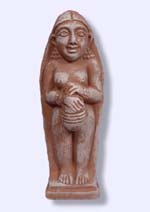 Siduri is the Babylonian Goddess of wine and beer, merry making and wisdom. She is referred to in The Epic of Gilgamesh as “the girl whose drinks refresh the soul.” It seemed only appropriate that Pinot Noir enthusiasts, Adam and Dianna Lee, would stumble across the goddess in a wine book written by Hugh Johnson, and adopt her for their winery's name. The Lee’s have remarked, “We thought it was about time that someone other than Bacchus got some credit for wine.” The label says, “Beside the sea she lives, the woman of the vine, the maker of the wine.” Siduri has the distinction of crafting more distinct Pinot Noir bottlings than any other producer in California and Oregon. Since beginning modestly in 1994, the Lees have found an increasing and changing number of outstanding vineyard sources for Pinot Noir stretching all the way from Oregon’s Willamette Valley in the North to Sta. Rita Hills in California’s Central Coast in the South. In the 2006 vintage, 18 single-vineyard Pinot Noirs, 5 appellation blended Pinot Noirs and a unique California blend (Truett Nolan) are offered. As if that wasn’t enough to shoulder, in 1998 they began producing Syrah and other varietals under the Novy Family Wines label, named after Dianna’s family (the Novys).
 The Lees hail from Texas and when they arrived in Sonoma County in 1993, they had no winemaking experience. Adam, like many of his winemaker brethren, followed a circuitous route to winemaking. He majored in history in college where he had his first drink, having been raised in a Southern Baptist family that disapproved of drinking alcohol. Fresh out of college, he could only find employment in a wine store and it was here that Adam was able to taste many of the great wines of the world. He had a knack for selling wine and rose to President of Austin Wine & Spirits before becoming a buyer for Nieman Marcus in Dallas where he met Dianna Novy. Dianna grew up on a farm and majored in marketing in college, both pursuits eventually providing a valuable background for the wine business to come. The two began with $24,000 and one acre of Pinot Noir from a vineyard in the Anderson Valley, producing 107 cases of their first vintage in 1994, shortly after their engagement. On a whim, they left a bottle of their first Pinot Noir with Robert Parker, Jr., who was staying at the Meadowood Resort in the Napa Valley. Parker ultimately gave the wine a high score and they were in business to stay. To say their rise to success has been meteoric is to put it mildly. Critics fawned over the winery’s first release in 1994, and noted wine critics like Robert M. Parker, Jr. (“One of California’s top Pinot Noir producers.”) and Matt Kramer (“To taste Siduri is to taste some of the best Pinot Noir made in America today.”) were effusive. Despite their notoriety, the Lees work out of a modest winery warehouse in an industrial park in Santa Rosa (since 1998), and the two not only make the wines, they market and sell the wines, send out a frequent newsletter of interest, and still take out the trash. It is a no frills operation where the emphasis is on the wines. Siduri has always been committed to quality. Grapes are purchased by the acre and crops are rigorously thinned. All work in the winery is hands on with a commitment to top quality oak, and all wines are bottled unfined and unfiltered. The Pinot Noirs have been full-bodied, rich and very Caliesque, yet balanced and consistently reflective of the vineyard sources and vintages. The logistics of producing so many individual wines seems overwhelming to me and I have found some unevenness in the wines, finding some outstanding and still others just pedestrian. I find it admirable that the Lees have always been sensitive to pricing and have raised their prices little over the years. They offer something for everyone among the 7,500+ cases of wine they produce, ranging from their 2006 Sonoma County Pinot Noir (1,940 cases) priced at $19 to the 2006 Truett Nolan California Pinot Noir (192 cases) priced at $70.
2006 Siduri Sapphire Hill Russian River Valley Pinot Noir 13.4% alc., 295 cases, $40. Siduri has sourced fruit from this vineyard since 2000. This is consistently one of Siduri’s most elegant bottlings. 13 barrels out of 38 were chosen for this vineyard-designated wine. · A demurely colored and lighter weighted wine of great finesse with oak-kissed strawberries and cherries running throughout. The gossamer tannins create a silky texture. Very approachable, but leans a little heavily on oak.
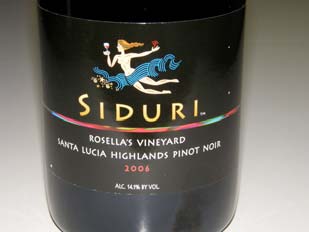 2006 Siduri Rosella’s Vineyard Santa Lucia Highlands Pinot Noir 14.1% alc., 490 cases, $45. Juice was bled off to concentrate the wine, more whole clusters were used than normal, and strict barrel selection was employed. A blend of Pisoni clone, Pommard clone and Dijon clones 777 and 828 aged 10 months in 80% new French oak. · Lovely aromas of black raspberry, plum jam, oak and green tea. Bright, tantalizing and full-bodied blackberry fruit with an attractive earthy note and a hint of citric tang on the clean finish. The tannins and oak are beautifully reigned in. The pedigree of the fruit really shows through in this wine and it is one of the best examples of Rosella’s Vineyard Pinot Noir I have ever tasted. A show-stopper and everything you could ask for in a Santa Lucia Highlands Pinot Noir.
2006 Siduri Sonatera Vineyard Sonoma Coast Pinot Noir 13.6% alc., 486 cases, $45. A blend of 32% Pommard clone with the remainder Dijon clones 115, 667 and 777. Aged in 81% new French oak for 10 months. · Darkly colored. Fruity nose featuring very ripe blackberry and black stone fruits with toasty oak and a hint of spearmint. The attack of dark fruits is rich and fulfilling with a smooth follow-through, finishing with a generous strike of oak.
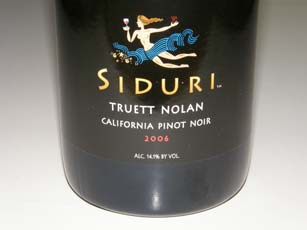 2006 Siduri Truett Nolan California Pinot Noir 14.1% alc., 192 cases, $70. This is a special wine to honor the birth of the Lee’s third child, Truett Nolan, who was born April 17, 2006. It is a blend of 50% Keefer Ranch Pinot Noir, 25% Sonatera Vineyard Pinot Noir, and 25% Clos Pepe Vineyard Pinot Noir. Barreled for 16 months. · The nose is restrained but charming offering oak-dusted black cherries and a small dose of good Pinot barnyard. Lovely red Pinot fruits are softly textured and enhanced by oak and spice. The whole package is seamless and comforting and the finish has remarkable persistence. This is a refined and restrained Pinot Noir that offers its pleasures slowly - a wine that seduces you rather than attacks you. It was still drinking beautifully the next day from a re-corked previously opened bottle portending a long life ahead. Here’s hoping the Lees keep having children.
Siduri Wines are sold primarily through a mailing list with some retail and restaurant distribution. The winery is open for tours and tasting by appointment at 980-c Airway Court, Santa Rosa (707-578-3882). Join the mailing list at www.siduri.com. Several years ago in one of Siduri’s newsletters, Adam Lee wrote about the differences between the appellation wines and single-vineyard wines he produces. Although this piece was written about Siduri Pinot Noirs, it is applicable to most Pinot Noir producers. The explanation was so well composed, I wanted to paraphrase it here for the reader’s interest. “Legally speaking, 95% of the grapes from a single vineyard wine must be included in a designated single vineyard wine. In an appellation wine, at least 85% of the grapes must be sourced from that appellation. When grapes are harvested from a single vineyard, they are fermented in small bins and tanks. Fermentation progresses differently depending on the size of the fermentation container. Different yeasts may be employed in the different lots as well. The result is several distinct wines from the same vineyard. Each of these wines then goes directly to barrel and several different coopers may be used. Varying ages of wood and toast levels are used. Each barrel ends up as a separate and distinct wine. After 6+ months of aging, each of the barrels is tasted and eventually several different blends are determined. The favorite blend becomes the single vineyard Pinot Noir. The final number of barrels chosen for the final blend can vary considerably. The barrels that don’t make the single-vineyard blend go into the appellation wines. These wines are blended with wine from other vineyards in the same appellation. One would assume that the barrels that don’t make the single vineyard wine are inferior, and that a blend of these barrels from different vineyards would also prove inferior. That does not always prove to be the case. Even though certain barrels are not strictly representative of a particular vineyard doesn’t mean that they don’t taste good - they just aren’t distinctive enough to make the cut for a single-vineyard wine. The appellation wine may actually be preferred by many consumers.”
Zepaltas WinesRyan Zepaltas is a 28-year-old assistant winemaker at Siduri who came to wine through fate. After moving to California from Wisconsin in 1998, where he was an accomplished skateboarder, he landed a cellar rat job at La Crema Winery. Two years later, he went to New Zealand to work at Villa Maria and it was here that he realized his winemaking calling. After returning to California, he worked at several wineries, gradually developing a serious interest in Pinot Noir. Ryan became the Cellarmaster and Assistant Winemaker at Siduri five years ago. Ryan leases a small space at Siduri for his own eponymous label which he began in 2004. He is one of the new hounds in the Pinot race and has the good fortune to have an experienced mentor in Adam Lee to guide him. That is not to say that his wines are just like Siduri’s, for he has developed his own style which emphasizes a light hand and bright acidity. The focus is on Pinot Noir from the Russian River Valley and Sonoma Coast. I enjoyed the three 2006 Zepaltas Pinot Noirs and recently had the opportunity to taste two 2007 Pinot Noirs that were recently released.
2007 Zepaltas Sonoma Coast Pinot Noir 14.5% alc., 107 cases, $39. An appellation blend to be released in February, 2009. · A chameleon of a nose, changing constantly in the glass. Black cherry, raspberry, oak char and spice, Provencal herbs, white pepper and a little barnyard. Redder fruits on the palate including currants and cranberries with a hint of oak and roasted tomato. Bright and crisp with a slight citric tang on the refreshing finish. My family gulped the rest of this bottle down in nothing flat.
2007 Zepaltas W.E. Bottoms Vineyard Russian River Valley Pinot Noir 14.5% alc., 97 cases, $47. Clones 114, 115, 667 and 777. To be released February, 2009. · Demure aromas of cherries, dried flowers, herbs and oak. Appealing core of wild berries and edible flowers with svelte tannins, admirable finesse and good lift on the persistent finish. A feminine wine that is light on its feet, soft and silky and quite likable. Currently not as showy as the excellent 2006 version of this wine, but time in the bottle will change this.
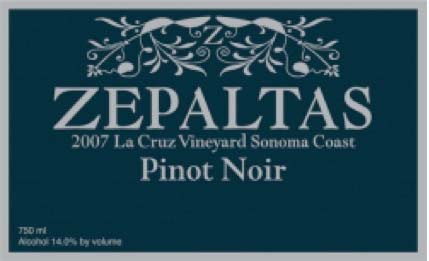 2007 Zepaltas LaCruz Vineyard Sonoma Coast Pinot Noir 14.0% alc., 97 cases, $48. Clones 114, 115. Aged 11 months in 40% new French oak. · Fresh berries, oak char and a hint of good Pinot funk on the nose. Succulent fresh flavors of berry tart, cranberries, dry cherries and toasty oak. Admirable elegance, soft in the mouth, and bright acidity on the refreshing finish. While the above wine (Suacci Vineyard) demands contemplating, this wine is more adaptable to the dinner table.
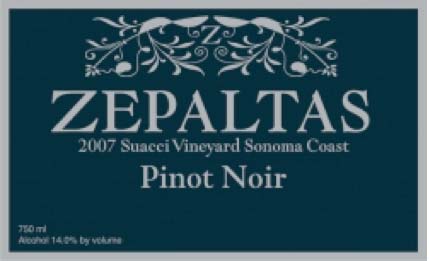 2007 Zepaltas Suacci Vineyard Sonoma Coast Pinot Noir 14.0% alc., 145 cases, $49. Suacci owner John D. Suacci has enlisted the services of noted farmer Charlie Heintz to manage the vineyard and improve yields and balance in the grapes. Aged in 38% new French oak for 11 months. · Spirited aromas of black cherries, wild flowers, hay and oak that rocket out of the glass. Delicious and vibrant blackberry and ollalliberry fruit with some other intriguing flavors I can’t pinpoint. Beautifully herbed and spiced and perfectly balanced, this is a wine of great nuance that makes you sit up and take notice. I loved this wine!
The Zepaltas wines are largely sold through a mailing list at www.zepaltaswines.com. Magnums are also available in limited quantity. A Syrah from the Santa Lucia Highlands Rosella’s Vineyard is also in the lineup.
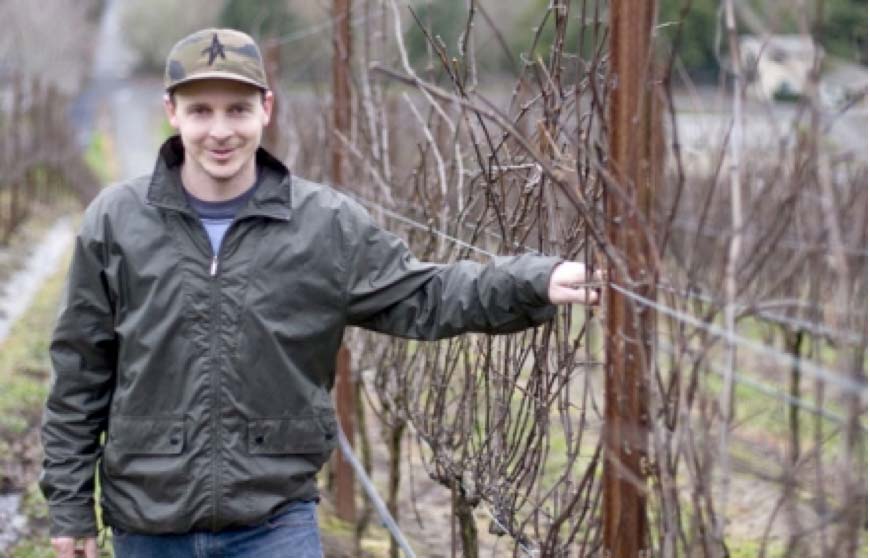
Sinor-LaValleeSinor-LaVallee Wine Company was founded in 1997 by the husband and wife team of Mike Sinor and Cheri LaVallee Sinor. Mike and Cheri met at Cal Poly San Luis Obispo in 1993 and were married in 1996 in the French town of Beaune, in the heart of Burgundy. Mike was first introduced to the wine business when he took a job at Corbett Canyon Vineyards in 1991 to pay for college. He quickly became enamored with the wine business and added several nearby Edna Valley wineries to his growing employment resume. For the 1993 vintage, he took some time away from school to work full-time at Saucelito Canyon Winery. After finishing Cal Poly in 1994, he joined Byron Vineyard and Winery and rose quickly to Assistant Winemaker to Ken Brown. While at Byron, Mike traveled to France and studied the vineyards and wineries of Burgundy. He left Byron after the harvest of 2000 to assume the role of winemaker at Domaine Alfred Winery in San Luis Obispo. At Domaine Alfred, Mike also supervised vineyard operations including the biodynamic aspects of farming the 130 acres of vineyards. After producing five vintages of highly acclaimed Pinot Noir and Chardonnay at Domaine Alfred, Mike departed to concentrate full time on his Sinor-LaVallee label and do consulting for other wineries. Cheri also entered the wine industry to help pay for college. After meeting Mike, she quickly caught the “wine bug” from him. After graduating from Cal Poly in 1994, she worked in the Corbett Canyon Vineyards tasting room and later became Executive Director of the Central Coast Wine Growers’ Association. In 2001, she left to become a full-time mother and manager of the Sinor-LaVallee household as well as President of Sinor- LaVallee (this lady is busy!). The 2004 Sinor-LaVallee Pinot Noirs were previously reviewed in the PinotFile and were recently re-tasted along with two of the 2005 Pinot Noir releases. Sinor-LaVallee works primarily with two vineyard sources - Talley-Rincon and Aubaine, both in the Arroyo Grande appellation, producing three distinct Pinot Noirs. Total production is about 400 cases. Mike’s wines are not meant for the timid. They are darkly colored and vigorous with flavor and character. Time is needed for the aromatics to emerge and decanting will improve accessibility. The Talley-Rincon bottling is less dense and penetrating than the Aubaine wine. The Aubaine Vineyard is a “frontier” vineyard” located near the town of Nipomo, just a few hundred yards west of the Arroyo Grande Valley. At 800 feet elevation, it is one of the few vineyards in California where you can view the ocean. Yields here are very small. The Talley-Rincon Vineyard is eight miles northeast of the Pacific Ocean with plantings dating to 1982. It consists of 38 acres of Pinot Noir, 46 acres of Chardonnay and small amounts of three other varieties. Many vines are own-rooted. The soil is shallow and well-drained and yields are less than three tons per acre.
2007 Sinor-LaVallee Aubaine Vineyard Central Coast Pinot Noir 14.9% alc., 151 cases, $40. This 14-acre vineyard is located just off Highway 101 between the towns of Arroyo Grande and Nipomo. At an elevation of 840 feet, it overlooks the Pacific Ocean. The wine comes from three different parts of the vineyard planted to Dijon clones 667 and 777. · Dark purple color in the glass. Shy scents of black stone and berry fruits, dried herbs and green tea that expand in the glass over time. Rich and opulent black cherry and black raspberry flavors with a complimentary underpinning of earthiness and oak. Smooth as a baby’s bottom and almost viscous in texture. Very leathery but in a $2,000 Prada coat kind of way. Still has some tannins to shed and some integration to achieve, and a little alcohol peaks out as it warms in the glass, but this is a prodigious wine. Very good.
2005 Sinor-LaVallee Aubaine Vineyards San Luis Obispo County Pinot Noir 14.5% alc., $35. · Very dark reddish-purple color. Super ripe dark fruited aromas with some prune and marzipan notes. Dark, dark black cherry and black raspberry saucy fruit with hints of raisin and musk, finegrain tannins, a velvety texture and a crisp, clean finish. A Pinot that exhibits a considerable amount of power that has been corralled nicely into a well-balanced libation.
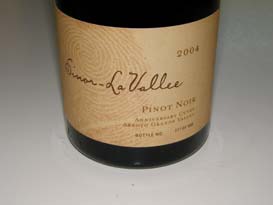 2005 Sinor-LaVallee Talley-Rincon Vineyard Arroyo Grande Valley Pinot Noir 14.5% alc., $35. · With some air time, scents of dark berry jam and restrained oak emerge. Saucy, fat and lush with dark fruits kissed by anise, mocha and oak. Supple tannins lead to a refreshing and dry finish. This wine plays more to classic Pinot.
2004 Sinor-LaVallee Aubaine Vineyards Arroyo Grande Valley Pinot Noir 14.5% alc., 176 cases, $35. Clones 667 and 777. · Reserved aromas of berry jam and oak char lead to viscous black and blue fruit flavors, tastes of tar, earth and dark chocolate and moderate drying tannins. A big wine that is still “one big rich pussycat.”
2004 Sinor-LaVallee Talley-Rincon Vineyard Arroyo Grande Valley Pinot Noir 14.5% alc., 100 cases, $35. From a one-acre block planted to clone 2A. · With swirling, aromas of dark fruit, dark caramel and vanillin emerge. Powerfully flavored deep, dark fruits with gripping tannins, but remaining smooth and suave. Intense and lasting dry finish.
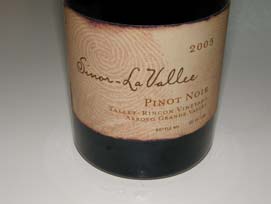 2004 Sinor LaVallee Anniversary Cuvee Arroyo Grande Valley Pinot Noir 14.5% alc., 46 cases, $40. 100% whole cluster fermented from Talley-Rincon and Aubaine vineyards. Foot-stomped by family and friends to celebrate family and marriage. · Intoxicating scents of black raspberries and blackberries, nicely oaked. A big-boned wine with plenty of sweet dark fruit but retaining a mouth filling plushness and smoothness. A welcome citric tang brings up the finish. Fans of the hedonistic style of Pinot Noir will go ga-ga over this one. This wine should drink beautifully for many years ahead.
Sinor-LaVallee wines are sold primarily through a mailing list at www.sinorlavallee.com. The phone is 805-473-8313.
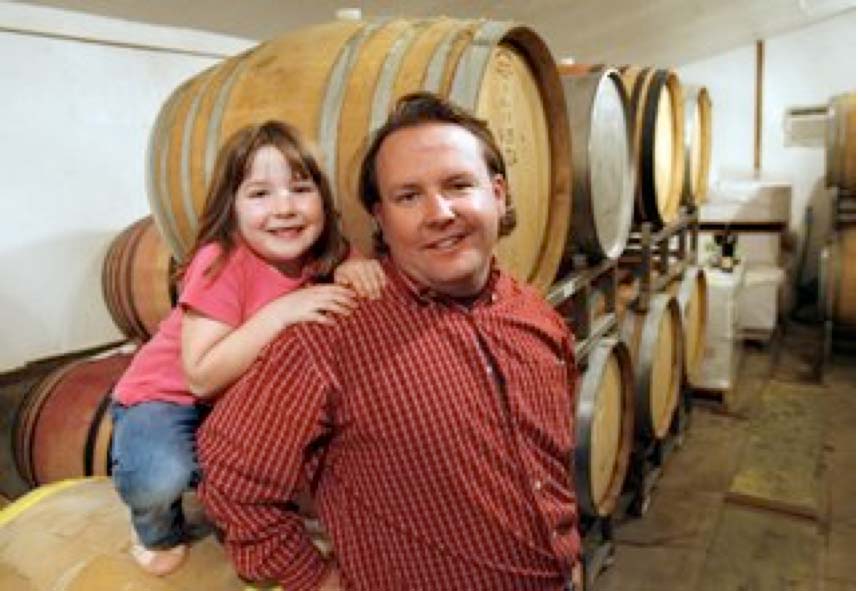
Harrington WineHarrington is an urban winery, located in a warehouse in the Produce District of San Francisco. Proprietor and winemaker Bryan Harrington is a Pinot Noir specialist who has achieved little notoriety, but his wines are truly worth your interest. While working as a bartender in San Francisco, Harrington traveled to Europe and became enamored with the very small producers, tending tiny vineyard plots and crafting a few barrels of wine. It was a model that he eventually was to pursue. He began by making wine in his basement in San Francisco, took several University of California Davis classes, moved on to a cooperative winemaking facility in Berkeley, and most recently settled into a new winery in San Francisco. The 2006 lineup of Pinot Noirs includes wines from five California appellations: Brousseau Vineyard in the Chalone appellation of Monterey County, the Gap’s Crown Vineyard in the Sonoma Coast, the Iund Vineyard in Carneros, the former Birkmyer Vineyard of Wild Horse Valley in Napa and the Wiley Vineyard in the Anderson Valley. The wines are crafted in an artisanal fashion with no wine made in larger than a 221 case lot. I first became interested in Harrington wines after tasting them at the World of Pinot Noir in 2006. The wines stood out with individuality, were strikingly seamless and exhibited deft winemaking.
2007 Harrington Wiley Vineyard Anderson Valley Pinot Noir 14.0% alc., pH 3.59, 227 cases, $40. This vineyard sits 10 miles from the Pacific Ocean and is one of the most westerly Anderson Valley vineyards. This cool area, known as the “deep end,” is often the last Pinot Noir vineyard harvested in the Anderson Valley. The old vines are rooted in fractured sandstone and dense loam. Integral to this wine is the 25-year-old Pommard block. Clones 37 and 777 complete the composition. Aged 10 months in 25% new French oak. · A big nose replete with black fruits, oregano and green garden. Blue and red fruits on the palate with a citric tang on the finish. Pleasant, but seems dull at present, lacking punch and finish. Not typical of what I have come to expect from this vineyard and I suspect this is an off bottle. I reviewed this wine at the 2009 Anderson Valley Pinot Noir Festival and said, “Alluring nose of black cherries with forest floor and stem spice. Very tasty dark berry and plum fruit with edible flower and chocolate overtones. Comforting in the mouth with soft tannins and bright acidity.”
2006 Harrington Gap’s Crown Vineyard Sonoma Coast Pinot Noir 14.4% alc., $45. · This alluring wine smells and tastes like a fresh Bing cherry pie. There is judicious use of oak, brisk acidity and a seamless integration of fruit and tannin.
Harrington Wines are available for tasting daily at Grange Sonoma, a tasting room collective located in Sonoma at 23564 Arnold Drive (on Highway 121). An Open House will be held at the new winery located at 1559 Custer Avenue in San Francisco on Saturday, December 13th, 12:00-5:00. The wines are available for purchase from the website at www.harringtonwine.com as well as a number of retailers in the Bay Area. 415-652-9655.
Benovia WineryBenovia Winery is on the move. Workers are preparing a 40-acre parcel adjacent to the winery for planting. An extensive and expensive underground French drainage system has been installed to ensure good drainage of the vineyard. Root stock will be planted next year with grafting of Pinot Noir and Chardonnay clones onto the root stock the year after. A second property near Freestone is also undergoing preparation for planting. New vines are sprouting in parts of the estate Martaella Vineyard (see below). New and modern equipment is being added to the winery including a new bottling line which will allow bottling when the wine is ready and assure complete control of all variables in the bottling process. A new basket press is used for all red wines and modern refrigeration and heating systems have been installed in the barrel rooms. Soon, a reception facility and tasting room will be opened on the property. There has been no compromises at Benovia, and the quality of the wines are evidence of the commitment and high level of personal involvement. A new entrance to the winery signifies the emergence of Benovia Winery.
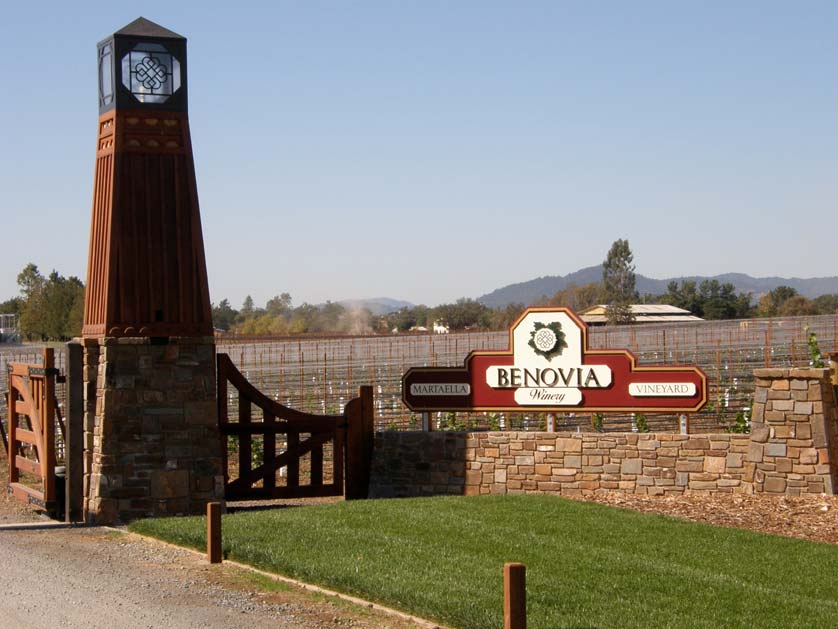 The vineyards at Benovia are farmed sustainably under the direction of Daniel Roberts, Ph.D., who is affectionately known as “Dr. Dirt.” Harvesting is done at night or in the early morning and each cluster is inspected before de-stemming and each berry is scrutinized after de-stemming. Small open-top fermenters are used. A pre-fermentation maceration of 5-8 days is followed by a slow fermentation driven by indigenous yeast. The Pinot Noirs are typically aged in French oak barrels for 14-16 months. The barrels are air dried for a minimum of three years to provide complimentary accents but not overwhelm the fruit. Talented winemaker Michael Sullivan is continually fine-tuning the winemaking process and is humbled by the challenge. He says, “What I love about winemaking is that perfection is unattainable.” I recently visited Benovia and sat down with Winery Manager Bob Mosby to taste the 2006 Benovia Pinot Noirs. I re-tasted these later at home as well. For 2007 there will be little Cohn Vineyard wine as a fire there burned leaves and very little crop ripened. 2008 production will be limited as well. (Note: It was recently discovered that Cohn Vineyard lies just outside the northern boundary of the Russian River Valley AVA so the label now reads Sonoma County.) The 2007 vintage produced small clusters and small berries from other Benovia vineyards. The 2007 Savoy, Cohn and Sonoma Coast Pinot Noirs show great promise. 2008 was a warmer, riper vintage producing wines that are not as crisp or classic as 2006. A 2008 barrel sample I tried show dark, dark color and notable concentration.
2016 Benovia La Pommeraie Russian River Valley Chardonnay 14.5% alc., $48. · Light golden yellow color in the glass. This wine offers all the good features of Chardonnay. Aromas of lemon pie honey, yellow apple, and subtle spice, toast and butter. Bright on the palate with welcoming flavors of lemon, yellow grapefruit, Honecrisp apple and hints of baking spices and caramel. There is just the right touch of oak, and a spear of acidity that finds its target on the quenching finish. Wonderful! Score: 94
2006 Benovia Sonoma Coast Pinot Noir 14.2% alc., 950 cases, $45. A Spring 2008 release. · This wine has opened up quite a bit since last tasted. Pretty aromatics of fresh berries and floral notes. Well-structured and sinewy with earth-dusted dark berry and plum fruit flavors encased in supple tannins and finishing clean and bright.
2006 Benovia Savoy Vineyard Anderson Valley Pinot Noir 14.1% alc., 220 cases, $55. Rich Savoy has been farming this venerable vineyard for 20 years. This wine contains clones 113, 115, Calera, Martini 13 and Pommard. Each clone is vinified separately and only the best barrels are chosen for the final blend. · Fullbodied and darkly fruited, this wine charms with its vibrant black raspberry and black cherry core of flavors. Still a little closed and needs to shed some tannins, but the persistent aromatic finish of cherries, herbs, and new oak is memorable.
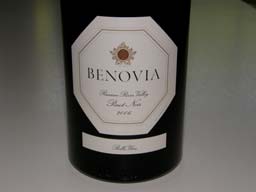 2006 Benovia Bella Una Russian River Valley Pinot Noir 14.5% alc., 168 cases, $58. This was known in the barrel as the “proprietary blend” which doesn’t sound too appealing. Benovia turned to their customers who came up with the name which means “beautiful together” in Latin. · Deep and darkly colored. Intoxicating and gorgeous aromas of rich black cherry jam and ripe plums. Would love to bottle this nose. Luscious dark-fruited core that is rich and plush and nicely spiced with soft tannins and a finish that gradually fades away with a smooth follow through like a Kobe Bryant jump shot. A complete wine that offers finesse with power. The Pinot Geek would drink this wine now while the 2006 Cohn and Savoy Benovia Pinot Noirs develop in the bottle.
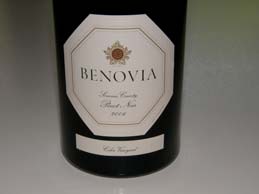 2006 Benovia Cohn Vineyard Sonoma County Pinot Noir 14.4% alc., 220 cases, $62. At 34 years-old, 9-acre vineyard is one of the oldest in California. Previously, the vineyard supplied notable producers like Williams Selyem and Kosta Browne, but it now an estate property of Benovia. Yields in 2006 were 1.1 tons per acre. The clones are unknown and are planted on St. George rootstock. This wine is darkly colored. · Needs time to open up. Long and persistent scents of red and black cherries nicely spiced and accented by hints of smoke and white pepper. Juicy cherry and raspberry fruits fan out nicely on the palate with some minerality and tartness in the background, leaving a tangerine peel vibe on the lively finish. A Sarah Palin wine - slightly high-strung and vibrant. This wine will find fans.
Benovia Winery is located at 3339 Hartman Road in Santa Rosa. Tours and tasting are available by appointment (707-526-4441). The wines are sold exclusively through a mailing list at www.benoviawinery.com.
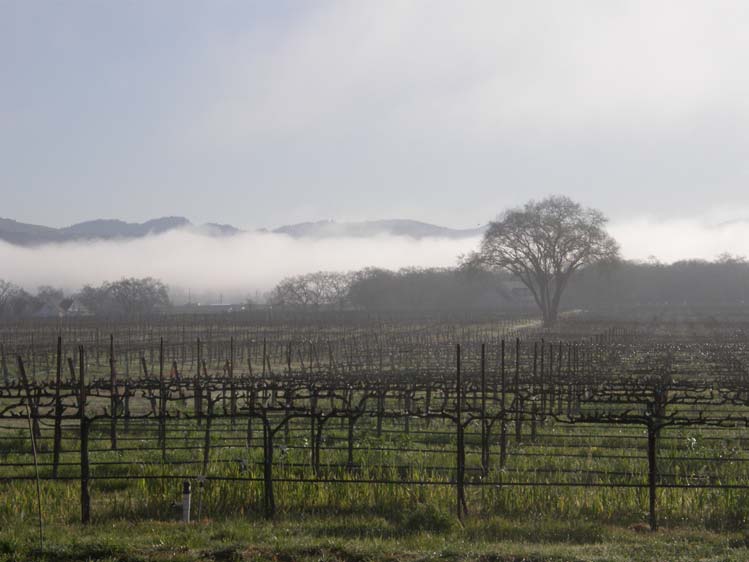
Tandem WinesGreg La Follette is somewhat of an icon among California winemaker circles. Educated at University of California Davis, he trained under wine masters such as Tchelistcheff and Kongsgaard and was one of the first winemakers bringing attention to the “true” Sonoma Coast (at Flowers). His own Tandem label sources from vineyards that represent long-standing relationships. La Follette helped plant Keefer Ranch Vineyard when he was the winemaker at Hartford Court. He provided much of the bud wood for Van der Kamp Vineyard in Sonoma Mountain. La Follette has a long standing relationship with Sangiacomo vineyards. He was the first to recognize the potential of Ritchie Vineyard when he first brought grapes into Flowers several years ago. La Follette has consulted on numerous new winery launches including Londer Vineyards and James Ball Vineyards, both in the Anderson Valley, and has contributed his expertise on the international stage as well. He has designed and redesigned fourteen wineries worldwide and was the consulting winemaker for the new University of California Davis teaching winery. He will be crafting Tandem wines at a new winery being built in Anderson Valley by James Ball. Recently he was the consulting winemaker at De Loach. With the 2006 vintage, La Follette has released four Pinot Noirs, three Chardonnays and a Pinot Meunier. The Pinot Noirs are burly and masculine in style and need decanting or time in the glass to reveal their charms.
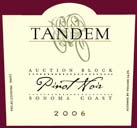 2006 Tandem Auction Block Sonoma County Pinot Noir 14.6% alc., 916 cases, $60. Composed of the best barrels of the winery’s best vineyards including Manchester Ridge, Sangiacomo Sonoma Coast, Silver Pines and Hawk’s Roost. Aged 11 months in 18% new French oak. · A constantly changing array of cherries, roasted nuts, oak char and cedar on the nose. The delicious black cherry core is accented with a cola and pine note. This one grows on you in the glass, taking on more charm as time passes. Each time you take a sip it gets better and better. Still has some tannins to shed and will benefit from aging. A remarkable wine that sneaks up on you.
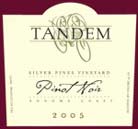 2006 Tandem Silver Pines Vineyard Sonoma Mountain Pinot Noir 14.9% alc.,851 cases, $60. Located at 980 feet elevation in a wind tunnel from the Petaluma Gap on Sonoma Mountain farmed by Norm and Carol Silverman. Mariafeld and Pommard clones. Aged in one-third new French oak for 11 months. · Oak-kissed black cherry scents are very lovely. On the palate, there is a healthy attack of loamy dark fruits including rhubarb. Like all good wines, it picks up steam with time in the glass. A fruit-driven wine of admirable balance which drank beautifully the next day from a re-corked previously opened bottle.
Tandem wines are available for sale on the winery’s website at www.tandemwines.com. There is some national retail distribution. The wines can be tasted at the Family Wineries Tasting Room in Kenwood daily. The wines are currently vinified at the old apple processing plant on Granvenstein Highway in Sebstopol 707-823-2794.
Taste of the Sonoma Coast
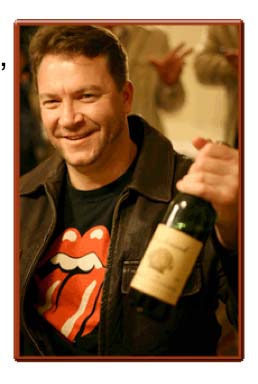 I have recently sampled a number of released Pinot Noirs from different areas of the Sonoma Coast . Several of these wines were obtained from Jason Jenkins, proprietor of Vine & Barrel, an excellent wine shop and tasting bar at 143 Kentucky Street in Petaluma. Jason (photo right) stocks well over 85 Pinot Noirs and carries almost all Pinot Noirs grown in the Petaluma GAP region. Built above an old speak easy, the location has served as both a brothel and card room and has even been a drinking hideout for Al Capone in the 1930s. In early October of this year, Vine & Barrel hosted the Great Petaluma Pinot Noir Tasting with over 35 wineries attending. The website is www.vineandbarrel.com (707-765-1112).
2007 James Family Stony Point Vineyard Sonoma Coast Pinot Noir 14.3% alc., $40. A family owned boutique winery owned by Jeff and Judy Jones in Sebastopol. Gold Medal winner at the 2008 Sonoma County Harvest Fair. · Light crimson robe. Long and persistent scents of black cherries, violets, oak and baking spice. Elegantly styled cherry core wrapped in savory herbs. The finish leaves a leafy and oaky impression. The nose trumps the palate at this stage.
2006 Calstar Cellars Sonoma Coast Pinot Noir 14.2% alc., $28.50. This is winemaker Richard Davis’s own label. He also makes the wines at Halleck Vineyard and Londer Vineyards. Best of Class winner at the 2008 Sonoma County Harvest Fair Wine Competition. Sourced from Sangiacomo and Hallberg vineyards. · Bright Bing cherry initially, developing a darker fruit profile with time in the glass. Cherry-driven flavors with a hint of prune, tea and subtle oak. A very satisfying drink that is silky textured and beautifully composed. Not a serious wine, but readily accessible and a good value.
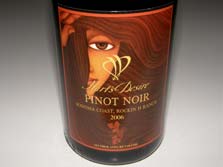 2006 Hart’s Desire Rockin H Ranch Sonoma Coast Pinot Noir 13.9% alc., $28. · Reserved aromatics of berries, exotic spices, oak and rose petals. Tart blackberry and black raspberry fruit with moderate fullness in the mouth, smooth texture, and a dry, tangy finish. Still drank fine the next day from a re-corked previously open bottle.
2006 Verve Sonoma Coast Pinot Noir 14.6% alc., 150 cases, $28. · Alluring scent of ripe cherry and raspberry compote and cola. Refined tannins surround the juicy cherry core. Hints of root beer and cream soda add interest. Nicely restrained and well-crafted.
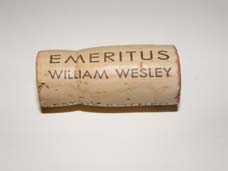 2006 Emeritus William Wesley Sonoma Coast Pinot Noir 14.3% alc., $50. Aged in 30% new French oak. · Patience is the word here. If you drink the wine now, decant it or swirl vigorously in the glass. Reserved, but pleasant earth-dusted black cherries, violets and wine cellar scents. Brimming with dark berry fruit that is toned with musk and cola. Well-integrated oak, silk and satin on the palate, and finishing with mild ripe, dry tannins. Beautifully crafted with great potential, but this wine has a ways to go before it completely reveals itself.
2005 Ridgeway Two Pisces Vineyard Sonoma Coast Pinot Noir 13.9% alc., 250 cases, $30. From a vineyard located on southwest Petaluma hillsides. Vinified by Dan Goldfield. · Luxurious scents of bright red cherries, sage and oak. Cherry-driven with crisp flavors and bright acidity on a medium-weighted framework.
2005 Andrea La Rue Loccmind Rd Sonoma Coast Pinot Noir 14.1% alc., $32. Grown by Flocchini Estate Vineyards, cellared and bottled by Flo Enterprise, Sebastopol. The winemaker is Jared Souza. · Deep reddishpurple in color. Dark berry jam, cooked plum, hint of prune and smoke aromas are followed in the mouth by silky dark fruits, black tea, and orange peel flavors that fan out nicely on the palate. Perfectly balanced with admirable acidity and some persistence on the finish.
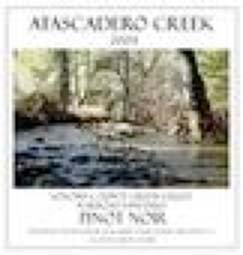 2005 Atascadero Creek Sonoma Coast Morris Ranch Pinot Noir 14.6% alc., $33. From a very small family owned winery in the Green Valley sub-appellation of the Russian River Valley. A tasting room is in Sebastopol at 3541 Gravenstein Hwy N. · Appealing fruity nose with slightly confected cherries and strawberries and a sidecar of Provencal herbs. The herbs carry through on the palate that features soft, light redder fruits. A soft, smooth and feminine wine with appeal.
2003 Windy Hill Estate Sonoma Coast Pinot Noir 12.5% alc., $25. An estate bottled wine from Windy Hill Estate in Cotati (Petaluma Gap region of Sonoma Coast). · A complex aromatic profile consisting of black cherry, rhubarb, herbs and a touch of oak, gaining power with time in the glass. Oak dominates the grillmarked fruit on the palate especially on the finish. Silky in texture with supple tannins and a dry finish. Decent at best.
Small Sips of PinotThere are several wines reviewed here that are worthy of your attention. They did not fit into any particular feature article.
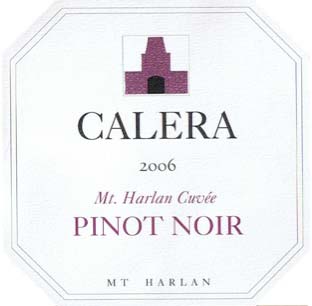 2006 Calera Mt Harlan Cuvee Pinot Noir 13.5% alc., 3,239 cases, $30. Vino-Seal. Primarily Mills with some Jensen and Reed vineyard grapes from younger vines. Aged in 30% new French oak for 14 months. · Cranberries, oak and a touch of alcohol on the nose. Medium-weighted red berry flavors with a hint of oak. A bit short on the mid palate and the very dry finish.
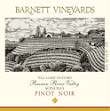 2006 Barnett Vineyard Tina Marie Vineyard Russian River Valley Pinot Noir 14.4% alc., 1180 cases, $34. Fiona and Hal Barnett founded their family estate on the top of Spring Mountain in 1983. This wine is sourced from the Green Valley sub-appellation of the Russian River Valley and is composed of Dijon clones. The winemaker is David Tate. · Medium reddish-purple color. Aromas of cherries, Asian spice and oak char. Cherry-driven flavors that are moderately mouth-filling. A lovely wine with charm but showing a bit too much oak for my taste.
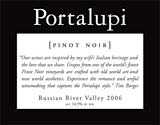 2006 Portalupi Russian River Valley Pinot Noir 14.5% alc., 328 cases, $42. Crafted by Tim Borges from Rochioli fruit. · Restrained scent of black cherries and toasty oak. Beautiful raspberry and cherry fruit, lightly oaked and softly presented with noticeable but ripe tannins. Very classy like a demurely dressed woman.
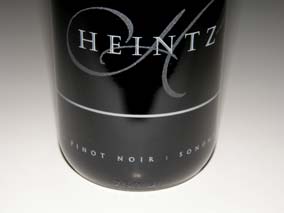 2006 Heintz Sonoma Coast Pinot Noir 14.8% alc., $45. From the Heintz Vineyard in the Sonoma Coast that is better known for Chardonnay. · A dark-fruited wine with a light touch of smoky oak. Juicy, restrained and nicely weighted in the mouth. There seems to be a hint of Brett in the nose that some drinkers will find appealing.
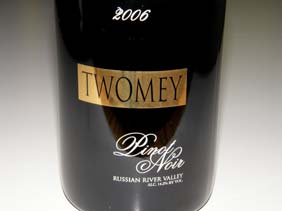 2006 Twomey Russian River Valley Pinot Noir 14.2% alc., $48. · Moderately light reddish-purple in color. Attractive scents of crushed plums, Bing Cherry, oak smoke and fresh crusty bread. Dark red cherry fruit on the palate with a hint of raisin and loamy earth. Silky, supple tannins, and a dry, tangy finish. A good drink that will please many.
2006 Anderson Family Vineyards Willamette Valley Pinot Noir 14.1% alc., $50. · Very enticing aromas of cherries, spices (particularly cinnamon), prune and smoke. Light and pleasant tart cherry and cranberry flavors with a refreshingly tart and grippy finish. An accessible wine that is good without being special.
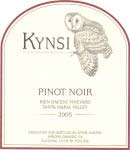 2005 Kynsi Winery Bien Nacido Vineyard Santa Maria Valley Pinot Noir 13.5% alc., $36. Kynsi is a small family winery located in the Edna Valley appellation of San Luis Obispo owned by Don and Gwen Orthman. Pommard and Martini clones. · Dark reddish-purple in color. Sensual aromas of black cherries, blackberries, violets and oak toast. Nicely composed red and black fruits with subtle overtones of oak, savory herbs and that signature Bien Nacido white pepper. Impeccable balance and a clean finish. This remarkable wine seduces rather than overpowers with tender, lithe and captivating flavors. This one was kissed by an angel.
2005 Paul Lato “Duende” Gold Coast Vineyard Santa Maria Valley Pinot Noir 14.3% alc., $50. · Very elegantly composed featuring red cherry fruits with baking spices and cola. Soft in the mouth and imminently likable.
Pinot Briefs
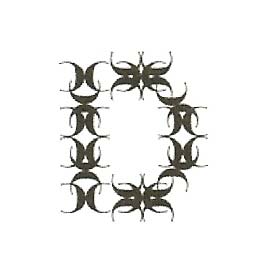
New Winemaker at C. Donatiello Webster Marquez, one of the “Three Amigo”
winemakers for Anthill Farms has been named Winemaker for C. Donatiello Winery. Marquez
was the Associate Winemaker for the Russian River estate’s first organic and sustainablyfarmed
small-lot Pinot Noir and Chardonnay releases, which debuted earlier this year.
Marquez replaces Troy McEnery, who has been named Partner and Winemaker at Bradford
Mountain and Healdsburg Ranches. All three brands are backed by investment banking
legend Bill Hambrecht.
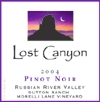 Lost Canyon Winery Changes Ownership Lost Canyon Winery was acquired by Fritz Winery, who will continue Los Canyon Pinot Noir and Syrah wines at their facility in Sonoma. Clay Fritz, and his winemaker Brad Longton, fell in love with Lost Canyon wines and have committed to continue their unique style, using the same vineyards and cooperages. Fritz Winery will offer Lost Canyon wines and hospitality at their San Francisco and Sonoma tasting rooms, but the Oakland Lost Canyon facility will close as of December 1, 2008. Labels There is something about the allure of labels that sales wine. When consumers are asked about what draws them to purchase a particular Pinot Noir in retail stores, the following factors most often come into play in order of importance: (1) Label impression, (2) shelf talker, (3) recognizable label name, (4) price, (5) sales person’s advice (more applicable to women than men - men are often reluctant to receive advice on wine which is somewhat analogous to a genetic reluctance to ask for directions - it is a macho thing).
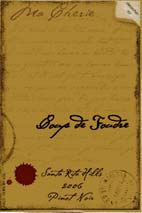 Coup de Fondre Pinot Noir Coup de Fondre is French for a lightning strike, something unforgettable “love at first sight.” This label is a partnership between Danielle Price, Director of Wine for the Wynn Resorts and John Schwartz, owner of Amuse Bouche Winery in the Napa Valley. Their first release was a 2005 Cabernet Sauvignon and a Bordeaux blend called Cuvee 37.2. The inaugural 2006 Pinot Noir comes from the owners’ three acre vineyard in the eastern part of the Santa Rita Hills and consists of only 125 cases. The wine features a peel-off label with room to record the special occasion that warranted the special bottle of wine. The wine is strictly allocated and priced at $95. Sold out at the winery, it is still available from Dean & Deluca, but at a premium ($135). Scherrer Releases Library Wines Fred Scherrer is one of the few winery owners that holds back wines and periodically releases them from his library. Go to www.scherrerwinery.com/library to see the lineup of Pinot Noirs (dating back to 1999), Chardonnays, Zinfandels, and Cabernets for sale. This is a rare opportunity to sample top quality aged California Pinot Noirs. Dutton Goldfield Returns Devil’s Gulch Pinot Noir Devil’s Gulch Vineyard in Marin County was hit with late rains in 2005 during flowering. As a result, there was no harvest. Devil’s is back in 2006. Devil’s Gulch Vineyard is a labor of love for grower Mark Pasternak, who first introduced winemaker Dan Goldfield to Devil’s Gulch back in the 1990s when Dan was working at La Crema. The Dutton Goldfield bottling is one of the most sought-after and truly unique wines made in California. Only 331 cases are available now at www.duttongoldfield.com or by calling 707-823-3887. While you are at it, look at the other excellent Pinot Noirs from Dutton-Goldfield including Freestone Hill and Dutton Ranch. Top notch juice lives here. Some Wine Possibly OK in Pregnancy Many doctors have recommended no alcohol intake during pregnancy out of fear of alcohol abuse and resulting fetal alcohol syndrome. Recent British research at the University College London indicates that light drinking during pregnancy does not result in an increase of behavioral difficulties or cognitive defects and in some cases children born to light drinkers were less likely to have behavioral problems compared to abstainers. The benefit appeared in those mothers who drank 3 to 6 glasses of wine a week. A few caveats to the study include the fact that the women polled were often in a higher social strata and the type of women who drank lightly may have been more relaxed to begin with. I believe a half glass of red wine every day or two for pregnant woman (and two glasses a day for nervous and horny spouses) is not harmful to a pregnancy. Oregon Wine Explorer “My Trip” The Oregon Wine Board has added a trip planner to the existing Oregon Wine Explorer so that visitors to Oregon wine country can create personalized itineraries for wineries, lodging and restaurants. Under the “My Trip” tab, the database of wineries can be searched and a pinpoint map and driving directions created with Google Maps. Dining and lodging options can be added in. The itinerary may be saved online for later reference or sent to a friend. With 393 wineries and 16 wine growing regions in the state, this is a welcome guide to wine country travel. Visit www.oregonwine.org. Evening Land Vineyards Inaugural Releases Evening Land Vineyards has announced their latest releases. Noted Burgundian winemaker, Dominique Lafon is the consultant winemaker for the Oregon Evening Land Vineyards wines and Sashi Moorman is the winemaker of the California wines. There are three Pinot Noirs available: 2006 Evening Land Vineyards The Occidental Vineyard Sonoma Coast Pinot Noir ($450 for a three pack), 2006 The Evening Coast Pinot Noir ($270 for a six pack) and the 2007 Evening Land Vineyards Seven Springs vineyard Estate Eola-Amity Hills Pinot Noir (“En Primeur” - $330 per six pack). Visit www.eveninglandvineyards.com. Barack Obama Fancies Wine Wine appears to be Obama’s drink of choice. Reportedly he has a 1,000 bottle wine cellar at his Hyde Park home but no word on the contents. Also, according to www.sfgate.com, 99.4% of the wine made in the United States was produced in states that helped Obama get elected. California, New York, Washington, Oregon and Michigan were all Obama states. Wine Country Tours by Zeppelin A California company is planning to offer aerial tours of the San Francisco Bay area in a newly built zeppelin. The zeppelin is one of only three in the world (the others are in Japan and Germany). Airship Ventures Inc. will house their zeppelin at Moffett Field in Mountain View, about thirty minutes south of San Francisco. The rides offer a dramatic view of Napa and Sonoma wine regions as well as the San Francisco Bay area. The cabin holds 12 passengers and two crew members, and tickets begin at $495 per person for a one-hour leisurely ride. The modern version of the zeppelin, built in Germany, is kept aloft by nonflammable helium. Visit www.airshipventures.com.
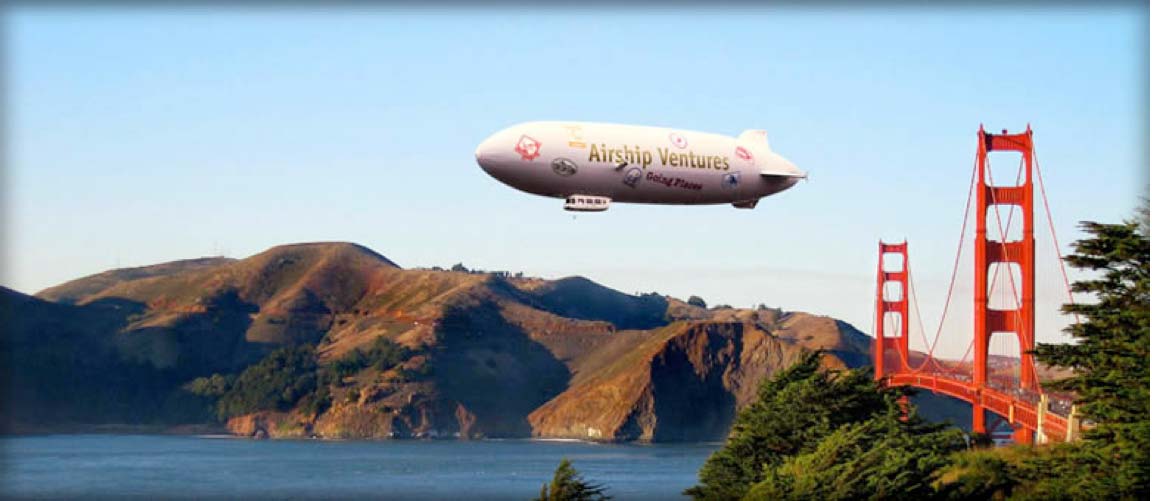 Wine Yeast Breakthrough Research Scientists at The Australian Wine Research Institute have cracked the genetic code of a wine yeast. This discover will pave the way for the development of improved wine yeasts that will allow winemakers to control fermentation and develop wines with desirable character and flavor. Yeasts can eventually be tailored for the production of particular wines in specific markets. The advances in genome research are remarkable for only ten years ago, the first yeast was sequenced and it took 70 labs, 10 years and cost millions of dollars.
 Listening to the Northwest Wine Scene Joe Dobbes, owner and winemaker of Wine by Joe, Jovino and Dobbes Family Estate, is the expert commentator on a weekly radio wine education show titled Northwest Vine Time airing on KXL 750 radio. All the interesting past shows can be accessed from the Wine by Joe website at www.winebyjoe.com. Joe has years of experience in the Oregon wine industry and adds quite a bit of grounded knowledge and humor to the broadcasts.
Fight Over Proposed RRV Boundary Change
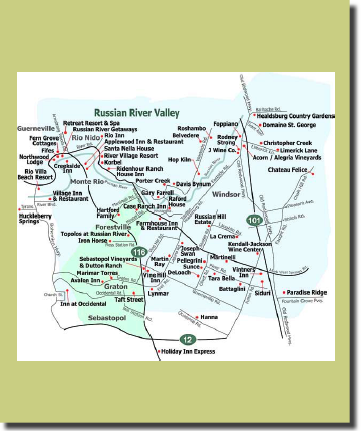 The new proposed boundary change for the Russian River Valley appellation is causing quite an uproar. Gallo has applied to the Russian River Valley Winegrowers Association for revision of the appellation boundaries to include their 350-acre vineyard in the Cotati region, south of the Russian River Valley. The motivation for Gallo is to allow them to take the fruit from their Cotati vineyard in the Petaluma Gap and blend it into their MacMurray Ranch Russian River Valley Pinot Noir. Those opposed to this boundary revision feel it is a dilution of the appellation. They claim that vineyards in this region are dramatically different from Russian River Valley vineyards and are climatically and geographically more appropriately part of their current Sonoma Coast appellation. Merry Edwards, Michael Browne and many other Russian River Valley winemakers and growers are vehemently opposed to this impending change.
San Francisco Is The New Winery Epicenter16 urban wineries have joined to form the San Francisco Wine Association (SFWA). The President of the SFWA, John Tarbini, said, “California’s newest wine country is San Francisco.” The urban vintners are more focused on investing in the best grapes, modern equipment and outstanding winemaking than spending lavish sums on estate guest centers and tasting rooms. Grapes are sourced from northern California wine regions and although quantities produced are small, quality can be quite high. SFWA charter members include Aver Family vineyards, Canine Wines, Connor Brennan Cellars, Damian Rae Winery, Due Cani Cellars, Flying Wine Cellars, Guy Riedel Wines, Jazz Cellars, Joelle Wine Company, Mark Moretti Winery, Milliarium Cellars, Pug Wine, Ricardus Corculum, Seawind Wines, Think Tank Wine Company and Townley Wines. A public launch reception will be held on December 11th in San Francisco. For more information, visit www.sfwineassociation.com. Crushpad is a large custom winemaking facility in San Francisco that has launched over 100 commercial brands. Dain Wines is probably the most recognized Pinot Noir brand but others include Cellar Rat, Conner Brennan Cellars, Joelle and Nicholls. Recently I received communication from two new Cushpad based Pinot Noir producers. Calicaro’s inaugural vintage is 2008 and includes 50 cases of Gap’s Crown Vineyard Sonoma Coast Pinot Noir and 25 cases of Lone Oak Vineyard Santa Lucia Highlands Pinot Noir. Alder Springs Vineyard in Mendocino and La Encantada Vineyard in the Sta. Rita Hills are scheduled for future vintages. (www.calicaro.com). A small winemaking group in Austin, Texas is making wine at Crushpad in San Francisco under the rockroom label. Before 2005, they had brought fruit to Texas to make wine, but it made more sense to do the winemaking closer to the sources of grapes. The latest release is a 2007 rockroom Bohemian Vineyard Russian River Valley Pinot Noir (www.rockroom.com). |